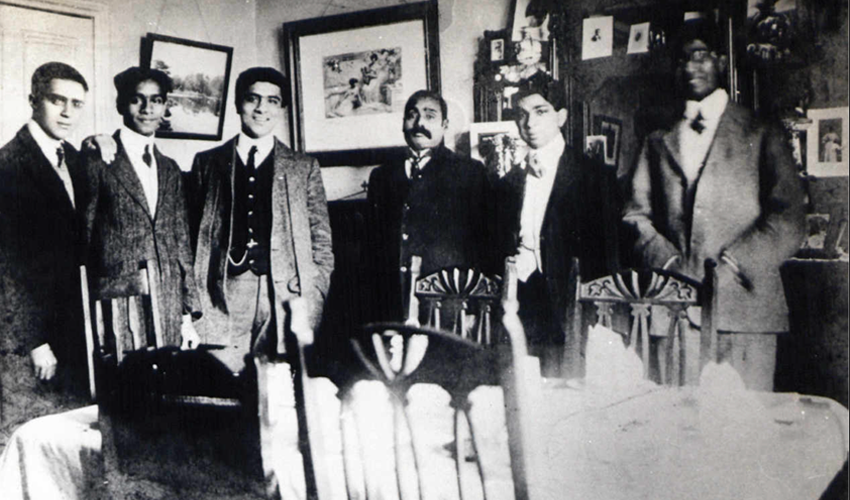
Lajpat Rai (centre) with Indian students at the University of Cambridge -1909. The leftmost student in the frame is a twenty-year-old Jawaharlal Nehru. Credits – Nehru Memorial Library and Museum and Dr. Vanya Vaidehi Bhargav.
We all know of the nationalist hero Lala Lajpat Rai from our history textbooks from school as part of the trio of assertive nationalists Lal-Bal-Pal. However, excluding his participation in the nationalist movement, relatively little is known in popular consciousness about his ideological leanings.
Keeping this in mind we bring to you a chapter from the book Being Hindu, Being Indian: Lala Lajpat Rai’s Ideas of Nationationhood by historian Dr. Vanya Vaidehi Bhargav. The book offers perhaps the first comprehensive intellectual history or biography of Lala Lajpat Rai’s understanding of nationhood. Resisting the popular impulse in scholars and in the public sphere to box Lala Lajpat Rai’s thinking into either secular Indian nationalism or Hindu nationalism, the author instead offers Rai’s nuanced and internally conflicting loyalties between the two. She does this by tracing his evolving positions on nationhood throughout his life with deep contextual analysis.
The chapter excerpted below titled Understanding Lajpat Rai’s Hindu Politics and Secularism is the last one in the book and a great point of entry to the arguments the book offers. It offers a critical analysis of Rai’s positions in opposition to Hindutva as imagined by Savarkar. After having clarified Rai’s position, the author then proceeds to reflect on how Rai’s ideas of nationhood were or were not implemented and the consequences of these choices by Independence. At the end of the excerpt she leaves us with a poignant thought; can some forms of Hindu nationalism be congruent with the principles of secularism?
The larger import of this chapter also lies in bringing nuance to our understanding of what we speak of when we speak of Hindu nationalism. It reminds us that it has never been a monolith and has evolved through a series of interactions and debates between often contradictory ideas.
This chapter has been excerpted below with the generous permission of the author and Penguin Random House India. Please click on the jacket cover below the text to buy a full book copy.
We have encountered Savarkar’s Hindutva in the chapters of this book which cover Lajpat Rai’s life before the 1920s. But there it frequently appeared as a comparative foil to better understand the nuances and distinctiveness of Lajpat Rai’s thought in these earlier years. It was really in the 1920s that the distinct and more extreme form of Hindu nationalism, represented and inspired by Savarkar’s Hindutva ideology, rose in popularity. After being deeply influenced by Savarkar’s Hindutva tract, Keshav Baliram Hedgewar formed the RSS in 1925. Scholars have highlighted that the Hindu Mahasabha acquired ‘a more clearly Hindu nationalist orientation in the 1920s’ when it adopted Hindutva as its creed. Because of Lajpat Rai’s close association with the leadership of the Hindu Mahasabha, he too is often assumed to have espoused, in these years, either Hindutva or the ‘stage’ of Hindu nationalism immediately preceding it. But we have seen that even as he sought to use the Hindu Mahasabha to engineer a sociopolitical consolidation of Hindus, Lajpat Rai did so to establish a ‘secular’ Indian nation-state, which —we will soon see— was based on a basic level of respect for India’s religio-cultural diversity.
To be sure, Lajpat Rai’s ideas and politics in the 1920s did intersect with Savarkars in significant ways. As we saw in Chapter 15, Rai was capable of occasionally expressing the belief that the Pan-Islamic concerns of Indian Muslims relating to key Islamic symbols or institutions (like the office of the caliphate) or holy sites (like Mecca and Medina) outside India, and the accidental fact of the existence of a significant number of Muslim countries on the world map (such as Afghanistan or Turkey), divided Muslim love and loyalty to India.’ Here, he indeed overlapped with Savarkar. An overlap was also evident in Lajpat Rai’s assumption that the mere accidental fact of the absence of similar Hindu symbols, institutions, or holy sites outside India, and of the virtual absence of Hindu countries in the world automatically made them more loyal to India. Such assumptions by both Rai and Savarkar seamlessly sidestepped repeated expressions of ‘loyal attachment’ to the Kingdom of Nepal on behalf of India’s Hindus by Hindus like Savarkar, and raised no questions about divided loyalties. The assumption of both men that Indian Muslim commitment to Islam detracted from their commitment to India was problematic. It drew hasty conclusions about the personal identities of countless Muslims simply on the basis of Islam’s links to lands outside India, a fact beyond the control of Muslims. These conclusions also overlooked Islam’s centuries-old, deep historical links to the Indian subcontinent.® According to this surface-level, exclusionary and punishing logic, being born into a Muslim family in India, a fact dependent on mere chance, halved your love and loyalty to India. Savarkar’s recent biographer Vikram Sampath has called his ‘broad generalization’ about Indian Muslims ‘extraterritorial allegiance’ overriding their commitment to India as ‘worrisome’ and ‘alienating’ for Muslims. Nevertheless, Rai could occasionally veer towards such reasoning, and in doing so overlapped with Savarkar. He also did so when, as we saw in Chapters 14 and 17, he occasionally expressed fears that the Pan-Islamism of Muslims in North-West India, if not all Indian Muslims, was linked to a desire to establish ‘Muslim dominions’ in India.
As revealed in Chapter 18, similarity with Savarkar is also visible in Lapat Rai’s espousal, in the mid-1920s, of a view of ‘history’ in which Hindu political decline and vulnerability was attributed to their adoption of non-violence, and in Rai’s opposition to Gandhian non-violence in favour of a masculine, violence-ready politics of Hindu sangathan. The two men further converged when Lajpa Rai, at times and in certain contexts, viewed India’s Muslim minority, despite their significantly smaller numbers, as stronger than India’s Hindu majority. These convergences were significant. They meant that at least once Lajpat Rai fleetingly wondered, although with a sense of despair and foreboding, whether the Savarkarite way was perhaps not the only option left. They also meant that Rai could be impressed with certain aspects of Savarkar’s Hindutva tract when he reviewed it in 1926. This included its expansive yet precise definition of ‘Hindu-ness’ as constituting something broader than simply following Hindu religion, and of Hindus being united by common blood and culture. The intellectual convergences between the two men potentially meant that Lajpat Rai could occasionally overlook what distinguished his political world view from Savarkarite Hindutva nationalism, which in turn diminished his capacity to publicly criticize it. This in turn may have prevented observers from clearly distinguishing his political-intellectual world view from that of Hindu nationalists like Savarkar, encouraging them to gloss over meaningful distinctions between Lajpat Rai’s politics and the politics of Savarkar, and others-like Parmanand, Kelkar, Moonje, and Hedgewar-who shared a much closer ideological affinity with him.
Regardless of genuine intellectual overlaps, and his own fleeting seduction by aspects of Hindutva when he read it, Lajpat Rai’s views remained distinct from Savarkar’s. Firstly, Rai’s expression of discomfort about ‘Pan-Islamism’ itself does not make him a Hindu nationalist of a Hindutva or any other variety. Whether one evaluates this position as problematic or not, such unease has sometimes also accompanied certain types of secular Indian nationalism that substantially respected India’s religio-cultural diversity. Additionally, in Rai’s case, fears about Pan-Islamism, Muslim strength, and Muslim domination were at least partly also the result of his position as a member of a Hindu minority in Muslim-majority Punjab. His consideration of democratic reforms for Muslim-majority NWEP, and support for the Delhi Proposals and the Nehru Report illustrate that Lajpat Rai was able to overcome his anxieties about Pan-Islamism and Muslim domination, and grant Muslims their democratic advantage where they were majorities and constitutional protections where they constituted minorities. But fears about Muslim domination relentlessly gripped Savarkar, despite his hailing from Bombay Presidency with an overwhelming Hindu majority of 80 per cent. Savarkar’s politics remained predominantly and systematically guided by the belief that Indian Muslims were ‘anti-national’, more moved by Pan-Islamic concerns abroad than Indian concerns, and conspiring with Muslim nations to establish Muslim rule over Hindus in India. Unlike Lajpat Rai, Savarkar supported neither the Delhi Proposals nor the Nehru Report, apparently unable to bring himself to sanction constitutional protections for India’s religious minorities in the ways these proposals sought.
A second difference, which we have already encountered, was that throughout his life, as both an anti-colonial revolutionary and Hindutva proponent, Savarkar valorized violence, warfare, assassination, militarization and aggression as integral to politics. For him, Hindu sangathan was a vehicle to turn India’s Hindu majority into a permanent masculine and militarized Hindutva national brotherhood capable of violence. This was to take revenge on India’s Muslims for what he believed were historical wrongs committed by ‘them’, show Hindu majoritarian national strength and claim that India belonged primarily to Hindus. Lajpat Rai viewed Hindu violence in communal ‘self-defence’ as legitimate, but was far from seeing militarism, aggression and violence as essential to any and all Hindu politics. While this constituted potentially perilous reasoning, considering there was no explicitly defined end to this temporariness, Lajpat Rai viewed militant Hindu sangathan as a temporary measure to demonstrate Hindu strength at a time when constitutional negotiations were underway. Hindu sangathan was conceptualized as an urgent but temporary and instrumental means by which to secure a constitutional pact with Indias Muslims that was ‘fair’ to the Hindu majority and in consonance with a secular democratic Indian nation-state, which respected diversity and could even consider reservations for Muslims. Aware of the potentially harmful effects of a ‘rapidly’ aggressive Hindu communal politics, Lajpat Rai sought to deliberately limit such politics by keeping it under the wing of Congress’s Indian nationalism.
As for Lajpat Rai’s praise for Savarkar’s definition of ‘Hindu-ness’ as constituting something broader than Hindu religiosity, and of ‘Hindus’ being united by common blood and culture, in the unsettling, violent context of the 1920s, Lajpat Rai had read this as providing a robust definition to a Hindu ‘community’ rather than a Hindu ‘nation’. Despite his praise, he had also hinted that he did ‘not agree with all his [Savarkar’s] views’. Even if we disregard Rai’s cursory, vague allusion to some intellectual disagreement, we can discern from his writings and speeches, key differences between Rai’s nationalism and Savarkar’s Hindutva nationalism. As we have seen, first in Chapter 5 and then subsequently, for Savarkar, a ‘Hindu’, a member of the Hindutva nation, was one who: 1) was born in India and loved it as their fatherland, 2) possessed ‘Hindu blood; 3a) had inherited Hindu culture and felt a loving attachment to it, and 3b) whose holy lands lay within the territory of India. The first two ‘essentials’ of Hindutva were necessary to be considered part of the Hindu nation, but not sufficient. Both parts of the third essential’ were key: claiming ‘Hindu culture’ as one’s own and considering India alone as one’s holy land.
For him, the followers of different sects of Hinduism as well as Sikhs, Buddhists and Jains met all these criteria, and were part of the Hindu/Hindutva national fold. India’s Muslims and Christians met the first two criteria, but not the third. They had disowned their original Hindu culture and by converting to Islam and Christianity, respectively, had adopted different cultures entirely. Their religion, with their origin in and inextricable links to geographical spaces outside the territory of India, had endowed them with alien, ‘foreign’ cultures and a primary love for and loyalty towards their extraterritorial holy lands over and above their Indian fatherland. In later years, while charging Muslims with extraterritorial loyalties to Muslims outside India, Savarkar would compare them to the ‘Jews of Germany’, echoing the Nazi view of Jewish treachery to Germany. Hindus, on the other hand, not only loved the land of India as their fatherland, but were attached to the ‘Hindu culture’ (the cultural essence of India), and belonged to religions which had their origin in, and intimate, inextricable links with, the territory of India. This in turn endowed them with a supreme love and loyalty to India as both fatherland and holy land. Savarkar linked the territory of India exclusively with Hindus, and claimed that because India was loved and revered most loyally and monogamously by Hindus, it belonged solely to ‘Hindus’ (a category in which he included Sikhs, Buddhists and Jains).
As mentioned, Savarkar himself consistently expressed, on behalf of ‘all Hindudom, extraterritorial sympathy, ‘attachment’ and loyalty’ towards the ‘ independent Hindu kingdom of Nepal’. Under Savarkar’s leadership, the Ratnagiri Hindu Sabha had paid ‘loyal homage’ to the King of Nepal, ‘the cultural head of Hindudom’ But this never prompted him to conclude that Hindu love and loyalty for India was bigamous and divided. While Muslim reverence for the extraterritorial holy site of Mecca supposedly rendered them less committed to India, Hindu ‘loyal attachment’ to extraterritorial Nepal apparently did not have the same effect on Hindus. Savarkar continued to view Hindus as monogamously devoted to India, and therefore possessing a supreme claim over it. The Hindutva tract asserted that the Hindus were a ‘nation’ and that the ‘Hindu nation’ had a supreme claim over India. In 1938, Savarkar would explicitly proclaim that Hindus constituted the only nation in India, with Muslims constituting only a minority ‘community’. He would also insist that ‘India must be a Hindu land, reserved for the Hindus’, and ecstatically approved of the slogan ‘Hindusthan Hinduon Ka’ (India belongs to Hindus). For Savarkar, Muslims and Christians could only become members of the Hindutva nation, with its special and inextricable links to India, if they displayed the same monogamous love for India as fatherland and holy land, which could only be done by renouncing their religions, along with their inextricable links to extraterritorial, ‘alien’ and ‘foreign’ holy places and cultures. In short, India’s Muslims and Christians could only become part of the nation by abandoning their religions and assimilating into ‘Hindu culture’.
As Savarkar’s ideology of Hindutva nationalism began gaining popularity in India in the mid-1920s, Lajpat Rai did not embrace it. Nowhere did he argue that Hindus constituted a separate ‘nation’ by virtue of their sharing common Hindu blood, inheriting and loving a common Hindu culture, and because their holy lands lay within the territory of India. He did not define nationhood in a manner that excluded Indian Muslims and Christians because they had supposedly disowned India’s essential, indigenous Hindu culture, and adopted supposedly foreign religions and cultures. True, in the aftermath of the Khilafat movement, Lajpat Rai overlapped with Savarkar in espousing beliefs that Pan-Islamic concerns of India’s Muslims and the mere existence of Muslim countries could divide Indian Muslim love and loyalty to India. Such generalizations about Indian Muslims’ divided love and loyalty for India were problematic; they called into question the personal identities, and the commitments to their homeland, of millions of individuals that Rai did not know, simply on the basis of their religion. Yet, unlike Savarkar, Lajpat Rai neither insisted on equating Hindu culture with India, nor saw Islam and Christianity or Muslim and Christian cultures as essentially alien and foreign to India. He was neither driven by a desire to link India exclusively with Hindu religion and culture nor sought to claim that the territory of India exclusively or specially belonged to Hindus. In other words, unlike Savarkar, Lajpat Rai did not consistently labour to appropriate the territory of India solely for Hindus by linking it exclusively to them. He did not believe that India was a Hindu land to be reserved only for Hindus. And significantly, nowhere did Lajpat Rai express or endorse the expectation that Indias Muslims and Christians needed to actively repudiate their religions and cultures, and assimilate into ‘Hindu culture’. Expressing reverence for and assimilating into ‘Hindu culture’ was not an essential requirement for Indian Muslims and Christians to be included in Lajpat Rai’s definition of the Indian nation. The Savarkarite Hindutva logic of ‘exclusion from the nation unless you assimilate into Hindu culture’ never entered his thinking. Even as a prominent leader of the Hindu Mahasabha-and as one who advocated a militant Hindu politics-Lajpat Rai had not espoused a diversity-averse, exclusionary and forcefully assimilationist Hindu nationalism.
As a Mahasabha leader, Lajpat Rai had aimed at a militant sociopolitical consolidation of Hindus. But this Hindu consolidation coexisted with, and was guided by, a secular Indian nationalism, which sought to still respect India’s religious and cultural diversity. Some would argue that Savarkar was like Rai in his apparent openness towards granting ‘equal’ citizenship rights to India’s religious minorities. As president of the Hindu Mahasabha in 1937, Savarkar spoke of ‘equal rights of free citizenship’ for all, irrespective of religion, ‘as long as everyone discharged the common obligations and duties which one owes the Indian nation as a whole’. He also stated: ‘let all citizens of the Indian state be treated according to their individual worth irrespective of religious or racial parentage in the general population’. However, Savarkar’s ostensible willingness to grant equal citizenship rights to Muslims and Christians needs to be read alongside an analysis of his exclusivist-assimilationist Hindutva nationalist ideology as elaborated in his 1923 Hindutva tract, which he never renounced, and continued to champion. As we have seen, Hindutva held that Muslims and Christians could be full members of Indias Hindu nation only by assimilating into India’s Hindu culture (as defined by Savarkar). Savarkar’s willingness to grant equal citizenship rights was also conditional upon duties and obligations owed to the nation. This he could never bring himself to see Indian Muslims as fulfilling. In his 1937-38 speeches, Indian Muslims were, as always, inevitably seen as guided by ‘anti-Indian’, ‘Pan-Islamic’ and ‘extraterritorial allegiances’. Moreover, his statement on citizenship rights for religious minorities in 1937 needs to be read alongside his attacks in 1938 on ‘territorial patriots’ in the Congress who allegedly wanted Hindus to cease to be ‘a national and political unit’. He attacked the Congress’s concept of a territorially-based common Indian nationhood which, he believed, failed to understand that ‘in the formation of a nation-state, religious, racial, cultural and historical affinities count more than territorial unity or common habitant’ That Savarkar privileged Hindus in his imagined future ‘Indian state’ is evinced by his expressed beliefs in a ‘Hindu nation’, and in this Hindu nation constituting the nation in India.’ It was evident in Savarkar’s slogan ‘Hindusthan Hinduon ka‘, and his desire that Hindi in the Devanagari script be this Hindu rashtra’s national language. While Rai was comfortable with Hindustani in both scripts as India’s national language, Savarkar considered this proposal as ‘perverse hybridism’. That Savarkarite Hindutva wanted to ‘give the Hindus an empire over Muslims’, and desired a ‘constitution’ which would give ‘the Hindu nation’ a ‘predominant position’ and have the ‘Muslim nation’ live in a ‘position of subordinate cooperation with the Hindu nation’ was also Ambedkar’s view. Therefore, Savarkar’s statements apparently granting rights to Muslims need to be read alongside his other statements that were exclusionary, and undercut their belonging to India’s nationhood.
Between the two men, only Lajpat Rai was willing to unconditionally consider religious minorities members of the national community, despite their religious and cultural differences with Hindus. Savarkar was willing to have Indian Muslims and Christians live in India as ‘citizens’, but his exclusivist-assimilationist definition of Hindutva nationhood ensured they could only ever exist as second-class citizens of India. In contrast, regardless of religio-cultural differences, Lajpat Rai imagined Hindus, Muslims, Christians and others as members of the Indian national community, and thus as equal citizens of a future pluralist secular Indian nation-state. To belong to the Indian nation, India’s Muslims and Christians were not required to abandon their religions and assimilate into ‘Hindu culture’, imagined as the essence of the Indian nation. They were already envisioned as belonging to it, irrespective of their religious and cultural differences with Hindus. For Rai, India belonged not just to its Hindu majority, which adhered to Hindu culture, but also to its religious minorities which (alongside significant cultural overlaps) possessed their own cultures distinctive from Hindus.
In the mid-1920s, Lajpat Rai did not return to the ‘Hindu nationalism’ he had frequently expressed before 1915. That is, he did not return to the vision of India as inhabited by different ‘religious nationalities’ largely isolated from one another. Nor did he turn to newly ascendant Hindutva nationalism. Instead, he stuck to the concept of an ‘Indian nation’ to which he had shifted in 1915. Even as the turbulent mid-1920s shook his confidence in whether such a nation currently existed, Lajpat Rai wished to realize precisely such an ‘Indian’ nation, composed of India’s different religious communities, all of whom had a claim upon India.
With his faith in the current existence of an ‘Indian nation’ shaken, Lajpat Rai now ceased to elaborate the cultural identity of the Indian nation. Instead, he focused his energies on opposing separate electorates and communal representation. It is possible that, as during his wartime years in America, he could still oscillate between two kinds of ‘Indian’ nationalisms. Perhaps Lajpat Rai’s Indian nationalism could sometimes still veer towards endorsing the idea that the people of India were united by India’s Hindu culture and common descent from an ancient Aryan race. While this had been his way of endowing Indias Hindus and Muslims with a sense of common belonging, such Hindu cultural assumptions could make this Indian nationalism insensitive to Muslim religious and cultural diferences. Nevertheless, despite alienating Hindu assumptions, this Indian nationalism remained non-assimilationist and practically respectful of diversity. More importantly, Lajpat Rai’s continued comfort with the idea of Hindustani, in both scripts, as India’s national language suggests that he continued to be guided by that other broader, more pluralist indian nationalism he had also articulated whilst in the United States. This had entailed the notion of Hindus and Muslims belonging to a common ‘Aryan-Mongolian’ mixed race, and had attempted to craft a pluralist public national culture for India that celebrated the best elements of Islam and Hinduism, and of Hindu and Muslim cultures. While in the mid-1920s, Lajpat Rai had ceased to elaborate a cultural identity for his ‘Indian nation’, the same above-mentioned cultural imaginations of the Indian nation likely still guided his opposition to separate electorates and excessive communal representation. These, he now firmly believed, were sure to undermine the possibility of a united Indian national community ever emerging. In political terms, Rai’s Indian nationalism was consistently firm in its explicit willingness to grant equal citizenship rights to all individuals, and religious liberty, equality and justice to all religious groups. It was also willing to countenance community-specific political rights (in the form of reservations) for religious minorities. As shown by his support for the Nehru Report, and as you will see, Rai’s cultural imaginations of the Indian nation coexisted with, and were tempered by, his imagination of a civic nationalism in the political domain. The latter aimed to achieve a united Indian nation by granting individuals equal political rights and freedoms. This-as much as his cultural imaginations-gives insight into the nature of Lajpat Rai’s secular Indian nationalism.
But what should we make of Lajpat Rai’s sanction of a militant, violence-ready Hindu politics? Rai’s sanction of Hindu violence in ‘self-defence’ aimed at protecting the Hindu majority from perceived threats of Muslim violence and designs of domination. The sanction of potential Hindu violence was performed not through an appeal to intellectual resources within Hinduism, analogous to the manner that the concept of jihad is appealed to in Islam. Nor was this done through an appeal to the Bhagavad Gita which is how many Hindus, including the younger Lajpat Rai himself, had previously justified political violence, predominantly against the British. Instead, as we saw in Chapter 18, violence was rendered permissible mainly by undermining the concept of ahimsa which Gandhi sought to make central to Hinduism. Hinduism was defined to stress its compatibility with violence. This constituted religious justification for political violence, guided by a ‘religiously’ defined political end: to protect a ‘religiously’ defined majority from the perceived threat of Muslim domination.
But Lajpat Rai’s militant Hindu consolidation, and even violence, ultimately aimed to realize not a Hindu state guided by the anti-secular goal of Hindu domination but instead a secular Indian nation-state. Lajpat Rai flouted conceptual dichotomies by permitting ‘religious’ violence for the sake of realizing a secular Indian nation. Much of violent modern religious politics has historically been a revolt against the oppressiveness of certain harsh forms of secularism. But Lajpat Rai’s permissiveness towards Hindu violence was not guided by a desire to establish a Hindu state and to criticize and replace secular nationalism. Instead, Hindu political violence was intended to serve the ideology of secular nationalism. Lajpat Rai neither sanctioned Hindu violence to establish a Hindu state, not secular violence against religious authorities and institutions for the sake of secular Indian nationalism. What was distinctive about Rai was his permissiveness of ‘religion’-related violence for the sake of secular Indian nationalism. Violence was permitted not to generate unbridled Hindu domination over Muslims or to eliminate diversity, but to realize a secular Indian nationalism that respected diversity and granted minority rights, even as it protected Hindu democratic advantage.
Lajpat Rai articulated both a militant Hindu politics and a secular Indian nationalism, flouting long held assumptions among many that these two stances cannot be articulated by the same individual. However, it is not as if Rai’s militant Hindu politics had no bearing on his secular nationalism. The implications of his decision to champion a militant Hindu communal politics for his secular Indian nationalism cannot be ignored. Lajpat Rai did not hold these stances together easily. Rather than a stable, seamless intellectual position, Rai’s simultaneous articulation of a militant Hindu politics and a secular Indian nationalism constituted a complex, dynamic and precarious balancing act between sets of ideas in deep tension. He brought together secular Indian nationalism and Hindu communalism into an internally combustible relationship, in which, over time, one was bound to destroy the other. Lajpat Rai may have considered it an instrumental and temporary means to actualize his secular Indian nation-state, but his adoption of a militant Hindu communal politics heightened mistrust, estrangement, polarization and perhaps even violence between Hindus and Muslims. This perilous path threatened to undermine the very secular Indian nation that Lajpat Rai longed to realize. His consciousness about this danger had impelled him to occasionally try and deliberately limit the Hindu Mahasabha’s politics. At the same time, he continued to spearhead a Hindu politics that threatened to sabotage his secular vision. Rai’s complex intellectual position-what may be called his ‘secular-communal complex’ or ‘secular-communal’ combine-was marked by internal tension, friction and risk. And his turn towards a militant Hindu politics rendered his secular Indian nationalism rickety and unstable.
Equally importantly, Lajpat Rai’s Hindu communal politics did not invalidate the intellectual significance of his secular Indian nationalism. For more than three decades now, ‘revisionist’ scholarship has been challenging the oppositional binary long drawn between ‘secular Indian nationalism’ and ‘Hindu communalism’ by older generations of Indian nationalist historians. Ayesha Jalal has argued that, historically, secular Indian nationalism often ‘compromised’ with Hindu majoritarianism, while proponents of Hindu majoritarianism comfortably claimed the mantle of secular Indian nationalism and secularism. More recently, scholars like Shabnum Tejani and C.S. Adcock have shown that secular Indian nationalism and Indian secularism rest on a history of a Hindu majority having first been manufactured by opposing the political separatism of ‘low’ castes. This history was also complicit in denying Muslim demands for political representation. The historically-minded political anthropologist Partha Chatterjee has argued that the Hindu right approves of the secular idea of religion-state separation and easily uses the ideological resources of the secular state to promote its own homogenizing and domineering political and cultural agenda. Sometimes deliberately, sometimes inadvertently, such revisionist scholarship has collectively promoted the misconception that secular Indian nationalism/secularism and Hindu communalism/ majoritarianism can be comfortably championed together, and that secular Indian nationalism or Indian secularism are, therefore, ideals compromised by Hindu majoritarian communalism. Some scholars have argued, and some have been understood as arguing, that secular Indian nationalism and Indian secularism have in fact consisted of little more than Hindu majoritarianism-merely ‘Hindu confessionalism by another name’, as one scholar put it.
This body of scholarship has rightly corrected previously held mistaken assumptions about a neat and complete mutual exclusivity between secular Indian nationalism and Hindu communal politics. Lajpat Rai’s political thought and actions in the mid-1920s certainly reveal that these two positions are not mutually exclusive; they can be held simultaneously by the same individual. Rai’s secular Indian nationalism was articulated alongside a militant politics of Hindu consolidation, which aimed, by force, if necessary, to safeguard a Hindu majority and restrict separate Muslim representation. As a politician advocating a politics of Hindu consolidation, Rai did not oppose the secular state, but rather approved of the idea of separating religion and the state/politics for the sake of certain political and moral values. An examination of Rai’s simultaneous articulation of a militant Hindu politics and a secular Indian nationalism appears to align with the above-mentioned revisionist scholarship. It seems to suggest that Lajpat Rai’s secular Indian nationalism was deceptive or empty at worst, and contaminated and compromised at best.
But as mentioned earlier, Lajpat Rai’s complex intellectual position was marked by internal tension, friction and instability. To recognize this tension is to recognize the analytical and conceptual tension, contrast and even incompatibility that continues to exist between ‘secular Indian nationalism’ and ‘Hindu communalism’. It reminds us to retain and respect the meaningful analytical distinctions that still exist between these categories, even as we discard assumptions about absolute mutual exclusivity. Lajpat Rai’s adoption of a militant Hindu politics may have threatened to undermine it and render it unstable, but his vision of secular Indian nationalism continued to hold integrity and sincerity. As we will see in a little more detail below, it continued to possess positive, multi-layered content and meaning. While Rai engineered a politics of Hindu consolidation and sought to safeguard a Hindu majority, he aimed to separate religion from the state and from politics for the sake of values like inter-religious peace, religious freedom, equality and equal citizenship irrespective of religion. Moreover, rather than seeking Hindu domination over religious minorities, he was open to establishing certain institutional measures to prevent Hindu majoritarian domination. In short, his secular Indian nationalism cannot be reduced to Hindu communalism or Hindu majoritarianism. Rather than being dismissed as a mere cover for his underlying and supposedly more deeply held Hindu communalism, Lajpat Rai’s secular Indian nationalism has to be taken seriously.
To be sure, another reason why some revisionist scholars view secular Indian nationalism as compromised by Hindu majoritarian communalism is due to a conceptual overlap between them, at least in the case of some proponents of secular Indian nationalism. Here, the two concepts share the assumption of, and in some cases even attachment to, the notion of a Hindu majority. This overlap, an important revelation of revisionist historiography, cannot be ignored. But this has then tended to also slip into a mistaken tendency to conflate the two concepts, suggesting that due to it resting on a notion of Hindu majority, secular Indian nationalism is deceptive or compromised. This overlap between secular Indian nationalism and Hindu majoritarian communalism-with both sitting on notions of a Hindu majority-needs to be admitted, while remembering the meaningful differences that still exist between them.
This overlap is clearly evident in Lajpat Rai’s thought in the mid-1920s. Both his secular Indian nationalism and his Hindu politics rested on an attachment to the existence of a Hindu majority in India. Yet, Lajpat Rai’s attachment to the idea of a Hindu majority was not equivalent to a desire to establish Hindu cultural-political domination over Indias religious minorities. In other words, it was not equivalent to a desire for Hindu majoritarian domination. We may note and even critique Rai’s fervent attachment to the idea of a Hindu majority. Indeed, it went against Rai’s own vision of a future politics for India, where democratic decision-making, and majorities and minorities, would be based on, and continuously shift according to, a mathematical aggregation of political preferences. In such a future, religious identities would not matter in politics, and political majorities and minorities would not be determined by them. Yet, a critique of Rai’s attachment to the notion of a Hindu majority does not have to end in the notion that his secular Indian nationalism had little substance. However limited it might appear from the viewpoint of our best ideal of secularism, Lajpat Rai’s secular nationalism was still conceived as an attempt to establish a secular Indian nation-state grounded in inter-religious peace, religious freedom, equal citizenship and respect for diversity. He remained comfortable with certain political arrangements to prevent Hindu domination. Rai’s attempt to secure democratic advantage for the Hindu majority coexisted with his opposition to any fantasies of Hindu domination over Muslims or others. Therefore, Lajpat Rai’s secular Indian nationalism remained opposed to ‘inter-religious domination’, which the political theorist Rajeev Bhargava considers one of secularism’s core aims. For Rai, Hindu majoritarianism was to be checked not by dissolving the majority but by granting certain constitutional guarantees to the minority. Bhargava has argued that a ‘majority-minority framework’ offsets majoritarianism-another name for the domination of the minority by the majority-and that secularism is compatible with notions of majority and minority. Rai’s attachment to the majority-minority framework itself therefore does not turn his secular Indian nationalism or his secularism into a mere cover for Hindu majoritarianism.
Lajpat Rai considered the separation of religion from the state and broader politics as an essential condition for building a secular Indian nation. Put differently, for him, secularism was a prerequisite for building his secular Indian nation. Lajpat Rai’s secular Indian nationalism envisioned that his imagined secular Indian nation, inclusive of all of India’s religious communities, would politically rule itself in a future Indian state, which would have all members of these communities as its citizens. But what was the precise nature of Lajpat Rai’s secularism? Theorists of secularism have argued that secularism may well be a universal doctrine, but its internal elements are interpreted and related to each other in different ways, adding up to different conceptions of secularism. Each conception defines ‘separation’ (between religion and the state) differently, chooses different political and moral values as the point of this separation, or places different weight on the same values. As a Hindu ‘communal’ politician, Lajpat Rai arranged the basic conceptual elements of secularism in a particular way.
How, then, did he conceptualize ‘separation? We saw in Chapter 17 briefly that Lajpat Rai did not conceive India as a Hindu theocracy. Certainly, he did not envision the future Indian state as having a union or alliance with a Hindu religious order, as being guided by religious ends and purposes, or being directly administered by a priestly order or other religious authority. But rejecting theocracy does not make one a champion of secularism. Apart from rejecting theocracy, proponents of secularism also do not allow a state to have an ‘established’ religion-one official, privileged, dominant religion of the state. Though such ‘established’ states entail a degree of religion-state separation-they are not governed by a priestly order or other religious authority-they still grant one religion official, legal recognition. Such a state’s goals, and its laws and policies privilege this one religion over others. Lajpat Rai did not wish the Indian state to have Hinduism as its established religion. Lajpat Rai endorsed a secular state with goals entirely separate from the divine ends of religion, a state whose institutions were conceived as being distinct from the institutions of religion, and one which did not privilege Hinduism.
But, as Bhargava argues, secular states need to determine their relation with religion not just at the levels of goals and institutions, but also at a third level of law and public policy. He argues that while secularism must have religion-state separation at the levels of goals and institutions, it can permit some religion-state connection at the level of law and public policy. Secular states across the world have related state and religion at this level in different ways. This is what has produced different varieties of secularism in different countries. As stated in his ‘National Pact’, ‘to prevent any particular denomination being given undue preference over any other’, Rai envisioned that ‘no Government funds’ should be devoted to the ‘promotion and furtherance of any denominational institutions or purposes’. In his belief that the state must not actively fund any religious institution or purpose, Rai’s secularism resembled, as noted already, the ‘wall of separation’ ideal of secularism cherished in the United States. This is also evident in his granting ‘full religious liberty’, including ‘liberty of belief, worship, propaganda, association, and education to all communities forming the Indian nation’ as a ‘constitutional right’. It is further shown in his desire to abolish communal political representation altogether. But Rai’s secularism cannot be straightjacketed into the America-style strictly separationist ideal of secularism. This is suggested by his willingness to grant community-specific political rights (communal representation) in a certain form and for a limited time. Rather than being indifferent to religious communities, Rai’s secularism breached the wall of separation to consider political reservations for vulnerable religious communities in the form of reservations.
What were the political and moral values for which Lajpat Rai desired a substantial separation of religion from the state (and broader politics)? Clearly, the unrelenting waves of Hindu-Muslim violence that ravaged Indian society were a cause behind his stressing the importance of such separation. This inter-religious violence undergirded his discomfort with excessive community-based political representation, at least beyond ‘reasonable’ limits. One of the values his secularism therefore sought to achieve was peace, i.e, the prevention of what he called a ‘never-ending civil war’, arising out of a clash of politicized religious identities. Secondly, the secular state he envisioned would guarantee the constitutional right to religious liberty to all religious communities in India. A person would have the freedom to worship any god(s)/goddess(es) he/she wanted, or refuse allegiance to all. Religious freedom would be granted not just to the numerical stronger religious community of Hindus, but to all religious communities in India. And the prohibition of government funding for any religious purpose, to prevent preferential treatment for any particular religion, reflected a concern for impartial state treatment. Therefore, Rai’s secularism was guided by values of equality and justice. Moreover, belonging to one particular religion would not determine the rights and freedoms the state would grant to individuals. Lajpat Rai sought equal citizenship for all individuals in India. In Chapter 10, we saw that in 1918 he had argued that ‘every human being born in India, or of Indian parents, or who has made India his or her home, is a compatriot, a brother or a sister, regardless of colour, creed, caste or vocation’. Then, in 1928, he championed the Nehru Report which granted universal suffrage and defined a citizen as ‘every person who was born, and whose father was either born or naturalised within the territorial limits of the Commonwealth’. He took for granted that every such Indian would possess what may be called passive citizenship rights, by which they would claim entitlements from the state, without discrimination on grounds of religion. His endorsement of the Nehru Report, which granted the right to vote to every citizen above the age of twenty-one, reveals his acceptance of equal citizenship rights for all Indians, irrespective of religion. All persons, irrespective of religion, were recognized as active citizens ie., equal participants in the political domain.
Yet, it is true that the value that remained supremely important for Lajpat Rai was nationalism-the principle that the people of India must form a relatively harmonious and self-ruling political community. Rai opposed separate electorates and communal representation, believing that dividing India into two compartmentalized religio-political communities would inevitably cause religious division and strife, which would, in turn, thwart the unity and autonomy of the Indian national-political community. his secularism aimed at inter-community peace, precisely because Peace was indispensable for Indian national unity and autonomy. It could also be argued, however, that Rai’s granting of religious liberty, equality and justice to all religious groups, equal citizenship for all individuals amd even limited community-based, intended to promote a particular kind of Indian nation. In this sense, while his secularism remained supremely concerned with national unity, its other goals-peace, liberty, and equality for individuals and religious communities- while appearing as subordinate, less significant political-moral values, in fact give insight into the ways in which Lajpat Rai attempted to forge an inclusive national community, and therefore into the nature of his secular Indian nationalism. Additionally, as we saw in Chapter 17, Rai also believed in secularism’s vital importance for the Indian nation to achieve economic prosperity and international status after gaining independence from the British. National prosperity, recognition and respect also constitute values, which coexisted with other liberal, egalitarian and communitarian moral values that guided Rai’s secularism and nationalism. It is because of this layered, multi-value nature of Rai’s secularism that it cannot be reduced merely to a cynical, valueless Hindu majoritarian grab for power. Rather than a farcical secularism that existed only to veil an ulterior motive of securing Hindu majority domination, Rai’s secularism possessed positive content, was guided by multiple values and attempted to accommodate, and do justice to, India’s religious diversity. This remained true even as his adoption of a militant Hindu politics rendered his secularism unstable, threatening to undercut the very ideal that he wished to establish-particularly through its permissiveness towards violence, which undermined inter-community peace.
On 17 November 1928, sixty-three-year-old Lala Lajpat Rai succumbed to injuries he suffered after being hit by police lathis exactly a month later, the twenty-one-year-old Bhagat Singh avenged his death by assassinating Saunders, an act for which he would be sent to the gallows in 1931. A militant atheist inspired by Max and Lenin and recently involved in organizing inter-community dinners, avenged the death of a Hindu Mahasabha leader who had been involved in organizing a militant Hindu sangathan to guard against perceived threats from Muslims. It was with Rai that Bhagat’s uncle, the radically anti-colonial Ajit Singh, was deported to Burma in 1907, the year Bhagat was born. Although a Jat Sikh, Bhagat’s upbringing had been Arya Samajist, with the Samaj laying the ground for his radicalism. The knowledge of Lajpat Rai’s association and contribution to the Samaj must have formed part of his childhood. It was the radically anti-colonial National College founded by Lajpat Rai and Rai’s book collection that had inspired the young Bhagat into revolutionary anti-colonialism. Despite these connections, however, by the mid-1920s, Bhagat had come to vehemently disagree with Lajpat Rai’s Hindu Mahasabha politics. More than personal indebtedness or ideological convergence, it was Lajpat Rai’s lifelong service to anti-colonial nationalism, and his stature as a symbol of this anti-colonial nationalism, that had prompted Bhagat Singh to avenge his death.
The anti-colonial Indian nationalist fight for which both Lajpat Rai and Bhagat Singh lost their lives would be won nineteen years after Rai’s death. In the days before his death, Lajpat Rai had not been entirely right in his predictions about the direction that Congress nationalism would take. The Congress would become more, rather than less, inclined towards a stricter secular Indian nationalism which it wished to remain unspoiled by communal representation. Still, Lajpat Rai had been right in foreseeing that things would be complicated. Because the Nehru Report had failed to resolve political differences between Hindu and Muslim leaders, and was rejected by the majority of Muslim leadership, it would be temporarily shelved as a possible, consensus-based constitutional framework for a future, independent India. In the subsequent years, right up till Partition, attempts to negotiate would continue, come close to a solution, but fail for some reason or the other. This was ultimately a failure to resolve the following conundrum. The ideal of a ‘pure’ or hardline secular Indian nationalism unsullied by the politics of ‘communities’ was attractive in its apparent progressiveness. But it produced fears that in an India with an overwhelming Hindu majority, such a stricter secular Indian nationalism without political safeguards for religious minorities would inevitably culminate in Hindu majority domination. On the other hand, demands for safeguards in the form of separate electorates, ‘weightages’ or reservations may have been conceived as mechanisms to ensure effective equality, freedom, justice and solidarity. But they produced fears about division and fragmentation and, among the Hindu right, even about Muslim minority domination.
The reluctance to grant Muslims many of the political safeguards their spokespersons demanded was met by Jinnah, in the late 1930s, with an attempt at a radically new solution to this intractable problem. Having denied this notion his whole life, Jinnah would now declare that India’s Muslims were not merely a ‘community’, but a ‘nation’. This was a way to offset the permanent reduction of India’s Muslims, the world’s largest Muslim population, to a ‘minority’ forever dependent on the goodwill of the Hindu ‘majority’. Jinnah now held that as part of one ‘Indian nation’, Hindus would form a dominant majority and Muslims a weak minority. As two distinct ‘nations’, he hoped they could arrive at a multinational, consociational power-sharing settlement based on political parity between Hindus and Muslims. But rather than a multinational solution within one strongly federal state, his new ‘two-nation theory’, and danger-ridden rhetoric about a Muslim ‘homeland’, would eventually culminate in the Partition of British India, mutual massacres and the uprooting of millions, and the creation of two separate nation-states of India and Pakistan. In a key sense, the Partition was the result of the failure, of all parties involved, to arrive at a political and constitutional solution that resolved a difficult quandary and substantially allayed fears and promoted trust on both sides. Or, seen differently, the failure to resolve the ‘Hindu-Muslim’ quandary within the framework of a single (Indian) nation and a single state resulted in the Partition, which itself represented a particular kind of political solution. With this two-state solution, which conjured into being India and Pakistan, British India’s overwhelming Hindu majority became dominant in the Indian nation-state, which included a minority of Muslims, And a huge section of the erstwhile Muslim population of British India was transformed from a minority into a dominant majority in the new nation-state of Pakistan.
India’s constitution was drafted between 1946 and 1950, amidst a boycott by the Muslim League, and the violent massacres and large-scale migration of millions that accompanied Partition. The world’s longest political document laid out the fundamental laws, structures, principles and values by which newly Independent India was to be governed and by which the rights and duties of Indian citizens were to be defined. Once the subcontinent had been partitioned, Indias constitution did away with not only separate electorates and weightages, but also proportionate communal representations or ‘reservations’ for Muslims and other religious minorities. Two decades before, Lala Lajpat Rai had been willing to accept weighted communal representation of one-third seats in the central legislature for Muslims as demanded in Jinnah’s 1927 Delhi proposals. A year later, he had enthusiastically welcomed the Nehru Report, which guaranteed reservations to minorities both at the state level and at the centre (the latter amounting to one-fourth reserved seats in Parliament, in proportion to their constituting one-fourth of British Indias population). The Indian constitution represented a cutback on the restricted level of communal representation granted even by the Nehru Report, which was itself a cutback on the 1916 Lucknow Pact which Rai too had once gladly accepted. Although India’s constitution refused to concede any religious community-based political representation, it granted religious minorities community-based rights in religious, cultural and educational matters. As we saw in Chapter 17, Lajpat Rai had frequently dreamt of precisely such a secular constitution as the ideal way of ensuring a secular, united and harmonious Indian nation.
But his ideal had been achieved in the midst of, and even at the cost of, the terrible, violence-inducing partition of both his Punjab and India. Had he lived on, it is difficult to imagine him as feeling happy at the achievement of his ideal at the cost of these bloody upheavals. Yet, one can also imagine him lending his wholehearted support to the process of drafting India’s constitution. In line with his ideal vision of a harder line secular Indian nationalism, we can visualize him supporting the Indian constitution’s total rollback on reservations for the religious minorities left behind in India, seeing them, as many did, as partly the cause of Partition, and therefore unjustifiable after it. However, equally, and as always, one can envision him resonating with the group in the Constituent Assembly that, up to Partition, was willing to depart from their ideal of a ‘pure’, harder line secular Indian nationalism to concede reservations for religious minorities.
Much like Lajpat Rai’s vision, India’s constitution established India as a secular state. Unlike the Pakistani state’s relationship to Islam, India did not establish Hinduism as India’s official, privileged and dominant religion. Out of considerations of equality, freedom and justice, the Indian state was not meant to favour Hinduism only because of the coincidental fact that its followers happened to be in a numerically stronger position of being a majority in India. As Rai wanted, India’s secular constitution granted religious liberty and equal citizenship to all individuals, irrespective of religion, and granted community-specific rights to India’s religious minorities. A difference lay in India’s constitution committing the Indian state to providing aid for certain religious institutions and purposes, something Rai had refrained from doing. His National Pact suggests that Lajpat Rai envisioned a relatively strict wall of separation between the state and religion, granting religious communities full freedom (from state intervention) to manage their internal affairs. Yet, in Chapter 15 we saw that he was in favour of reforming, rationalizing and even purging religious observances which caused religious conflict and thwarted Indian national unity. Therefore, the Indian constitution’s permission to the Indian state to actively intervene in religious communities to make them more liberal and egalitarian may well have been supported by Lajpat Rai. India’s constitution predominantly rested, and rests, on a history of rejecting militant communal political consolidation- whether Muslim or Hindu-as a means to achieve a secular Indian nation-state. As a document that enshrined not just laws and procedures but also particular political-moral values, it instituted a version of secularism which sought to, through its emphasis on individual rights, discourage militant ‘communal’ politics via non-violent, democratic and institutional means. Certainly, Indian constitutional secularism did not sanction militant Hindu or Muslim consolidation for its own sake. India’s constitution discourages the kind of temporary, instrumental communal politics Lajpat Rai felt compelled to adopt for the sake of his dream of a secular Indian nation-state. Equally, it implements Rai’s dream of discouraging communal politics such that all individuals, substantially (though not always) act politically as individual citizens of India rather than primarily as members of different religious communities.
By not letting Lajpat Rai’s Hindu politics nullify the significance of his secularism, and taking the latter seriously, we can arrive at a more nuanced understanding of the historical and conceptual relationship between India’s constitutional secularism and the ‘Hindu right’. Some sections of the latter, however small, historically articulated what can be recognised as a genuine secularism, and played a role in shaping India’s secular constitution. One aspect of this history relates to the curbing of community-based political rights such as ‘weightages’ and eventually even reservations for minorities. This tendency to limit community-rights, alongside the creation of Pakistan, culminated in a constitutional secularism which has failed to prevent the severe under-representation of India’s Muslims in virtually all of its power-holding institutions. Yet, another relates to the rejection of separate electorates, which had the potential to freeze and institutionalize polarization, lock individuals into particular identity-groups and constrain their political choices. Importantly, Yet another aspect of this same history involving the Hindu right and India’s constitution relates to figures like Lajpat Rai agreeing on a secular state which does not officially privilege Indias Hindus, being willing to grant community-based rights to Indias religious minorities, and respecting Indias religious, cultural and linguistic diversity. This challenges assumptions of both some ‘secularists’ and some within the Hindu right today that the Hindu right has had little historical relation to Indias constitutional secularism and its grant of minority rights, which they associate only with Jawaharial Nehru and the Congress. While much of the Hindu right indeed opposed the Indian constitution, this ideological family constituted a spectrum, and some within it, like Lajpat Rai, today claimed by the Hindu right as an icon and ancestor, articulated certain ideas of secularism which found their way into India’s secular constitution.
Rather than undermine or resent it, the Right can choose to claim and uphold this legacy. Acknowledging Rai’s secularism opens the theoretical possibility of legitimate secularisms existing among some sections of the Hindu right. It also allows us to analytically differentiate between the different ‘secularisms’ emanating from within the Hindu right. Some of its sections, however small, articulate a version of secularism but one which is harsher and more minority-insensitive than the one enshrined in India’s constitution. These sections mistakenly consider the Indian constitution’s grant of sociocultural community-based rights for religious minorities as ‘pseudo-secular’ or ‘anti-secular’. This fails to understand that secularism can allow a measure of religion-state connection at the level of law and public policy in order to promote equality and justice. This secularism is also more uncompromising and minority-insensitive than the one championed by Lajpat Rai, who was happy to grant minorities community-based rights in the sociocultural domain. Acknowleding and understanding Lajpat Rai’s secularism allows us to clearly see how the harsher secularism of some within the Right departs from the more minority-sensitive version championed by its one of its claimed icons. More importantly, Rai’s secularism throws into relief the nature of the self proclaimed ‘secularism’ promoted by several others within the Hindu Right. While many among the Right champion the separation of religion and state, this does not automatically make them champions of secularism, if they are not genuinely guided by values such as peace, tolerance, religious liberty, respect for religio-cultural diversity, equal citizenship and non-domination. Those who talk of the separation of state and religion, but use this language of separation to oppressively assimilate India’s religious minorities into their own homogenized notion of Hindu/ Indian national culture do not count as proponents of secularism. The instrumental use of the language of separation and of secularism to actually usher in a disguised privileging of Hinduism or Hindu culture, and to establish Hindu cultural and political domination, does not amount to secularism, and in fact severely undercuts the core values of secularism in all its varieties. Any such dreams of Hindu supremacy and domination also violate the core values that guided Lajpat Rai’s secularism. Those among the Hindu right today who link questions of Indian citizenship to religion, and overtly or covertly dream of having hierarchically arranged citizenship rights on the basis of religion, with Hindus as first-class citizens and Muslims as subordinate, second-class ones, may be aligned with Savarkar. But they violate the vision of secularism held dear by Lala Lajpat Rai. Of course, it goes without saying that this holds even more true for those among the Hindu right who dream of stripping India’s Muslims of their voting and other basic citizenship rights.
This chapter from ‘Being Hindu, Being Indian: Lala Lajpat Rai’s Ideas of Nationhood’ has been carried here with generous permission from Penguin Publishers and Dr. Vanya Vaidehi Bhargava. You can support this work by clicking on the book cover below and buying the full volume.
Dr. Vanya Vaidehi Bhargav is an intellectual historian of modern South Asia who completed her D.Phil in History from St Antony’s College, University of Oxford. Her primary research interest is on the emergence of Indian secularism. She previously worked as a senior research fellow with the research group – ‘Multiple Secularities – Beyond the West, Beyond Modernities’ at the Humanities Centre for Advanced Studies, University of Leipzig, Germany. Her research has been published in prestigious journals such as Journal of Asian Studies, Global Intellectual History, and Studies in Indian Politics and Religion. Dr. Bhargav has also written for publications such as The Hindu, the Indian Express, and The Wire in service to her dedication to engaging with the public.
| 2500 BC - Present | |

|
2500 BC - Present |
| Tribal History: Looking for the Origins of the Kodavas | |
| 2200 BC to 600 AD | |

|
2200 BC to 600 AD |
| War, Political Violence and Rebellion in Ancient India | |
| 400 BC to 1001 AD | |
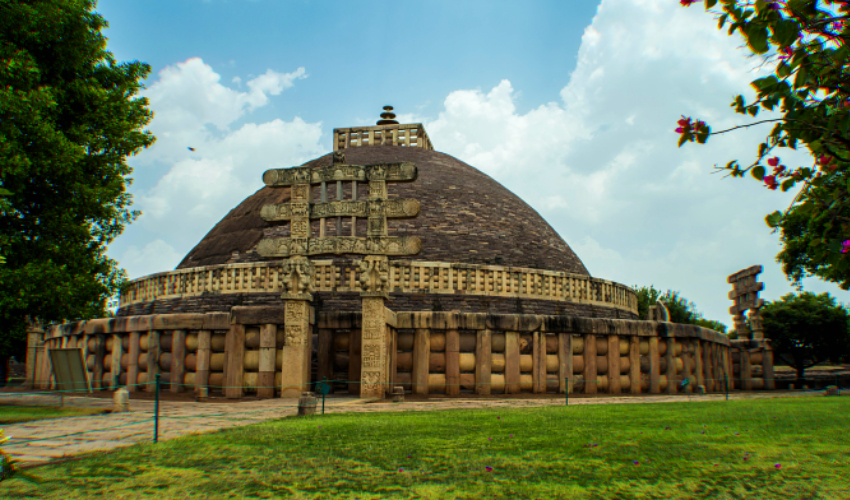
|
400 BC to 1001 AD |
| The Dissent of the ‘Nastika’ in Early India | |
| 600CE-1200CE | |
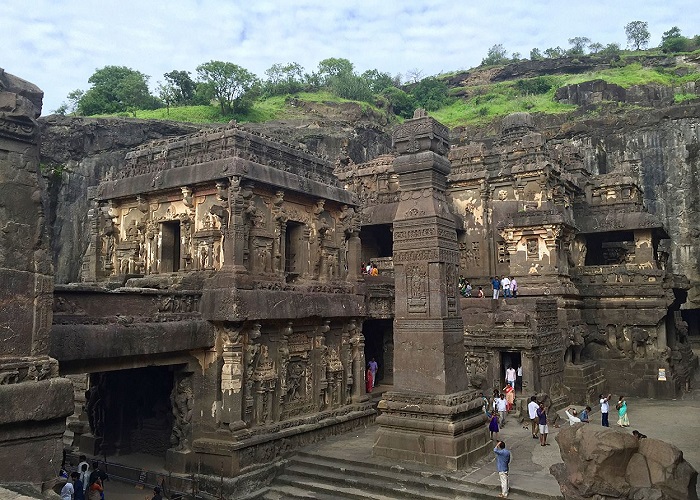
|
600CE-1200CE |
| The Other Side of the Vindhyas: An Alternative History of Power | |
| c. 700 - 1400 AD | |
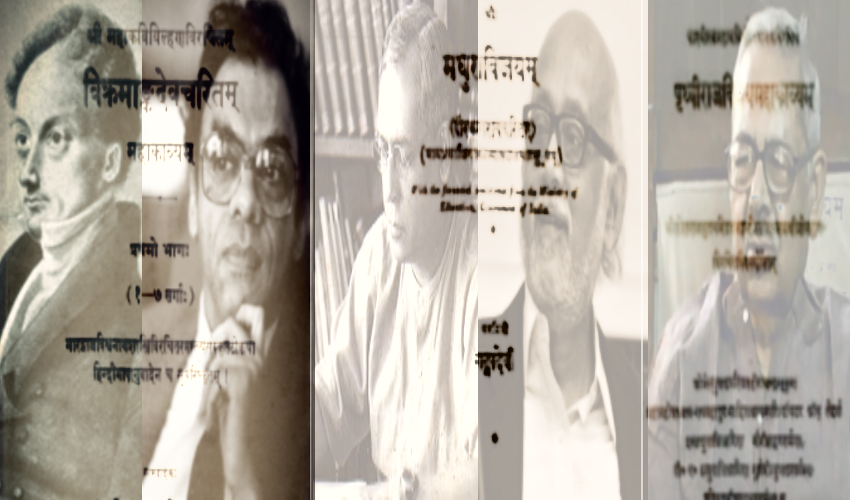
|
c. 700 - 1400 AD |
| A Historian Recommends: Representing the ‘Other’ in Indian History | |
| c. 800 - 900 CE | |
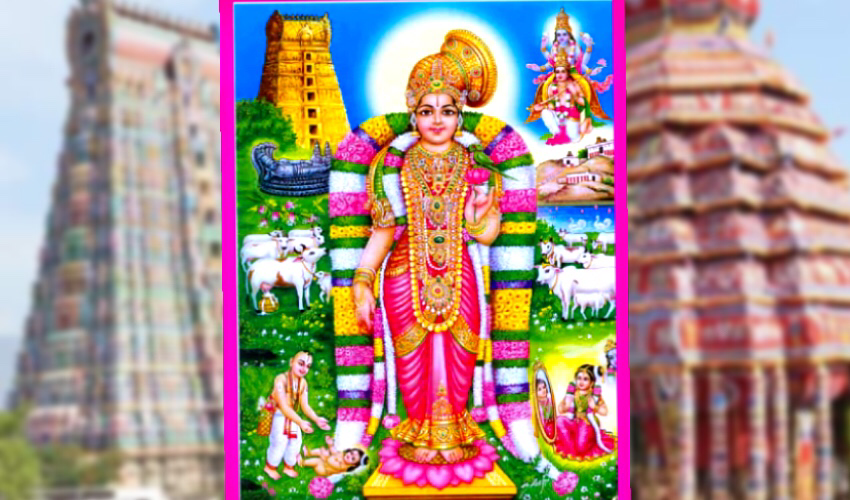
|
c. 800 - 900 CE |
| ‘Drape me in his scent’: Female Sexuality and Devotion in Andal, the Goddess | |
| 1192 | |
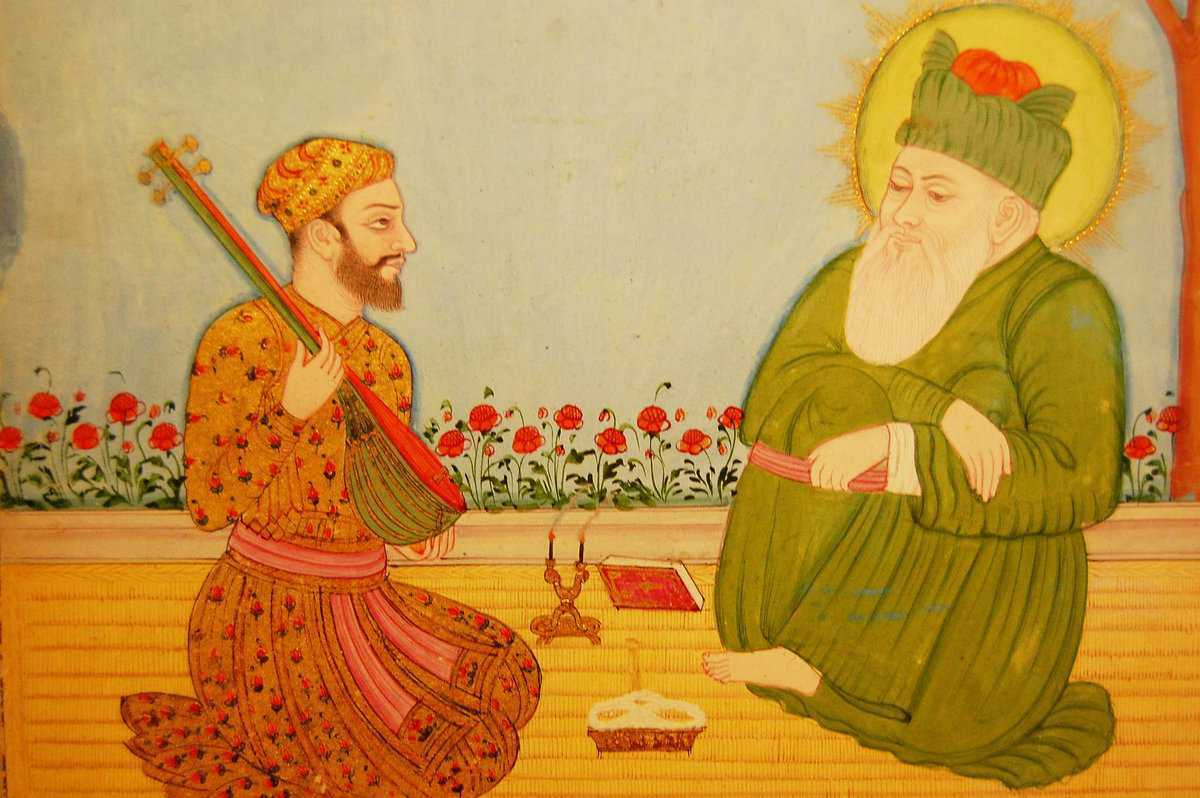
|
1192 |
| Sufi Silsilahs: The Mystic Orders in India | |
| 1200 - 1850 | |

|
1200 - 1850 |
| Temples, deities, and the law. | |
| c. 1500 - 1600 AD | |
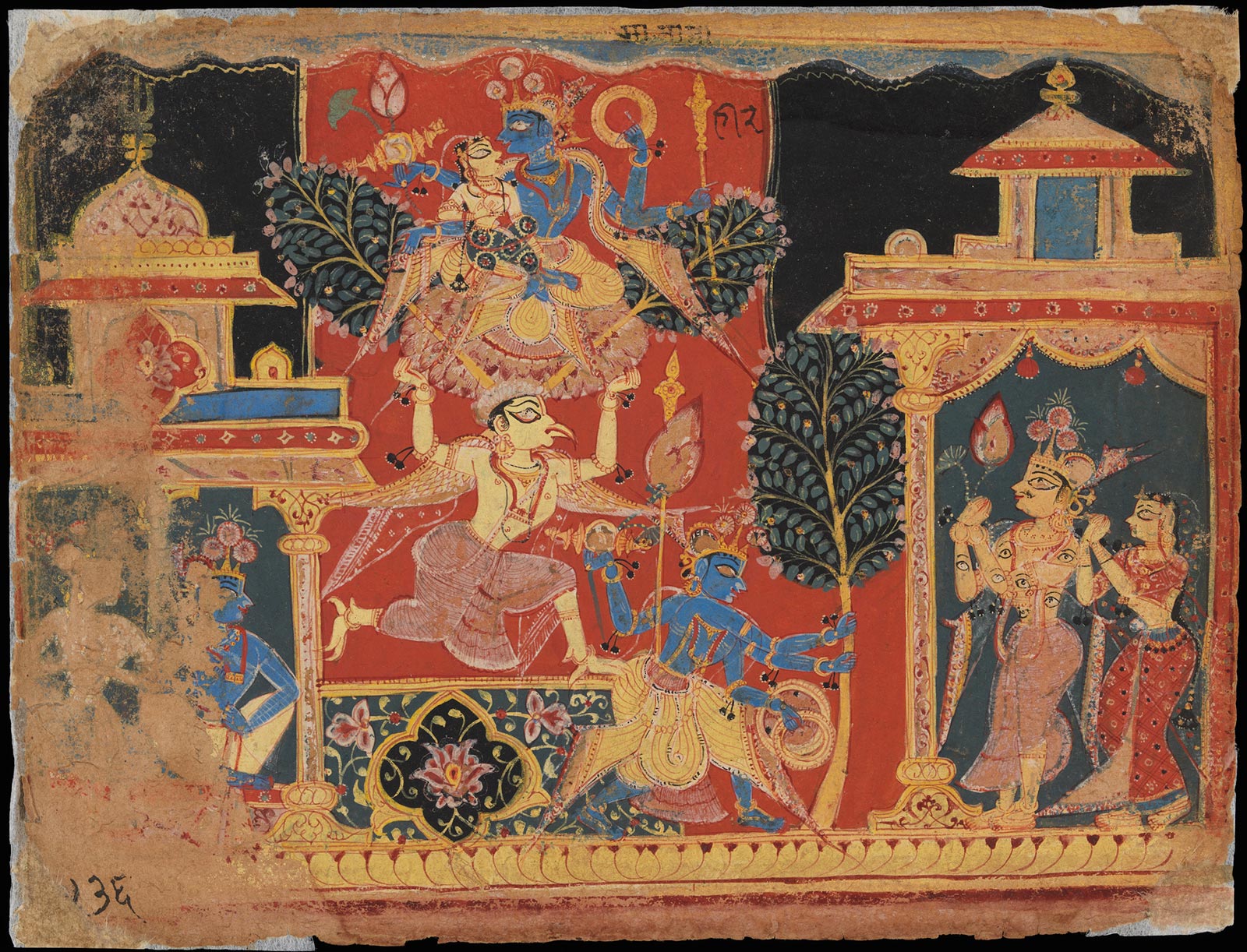
|
c. 1500 - 1600 AD |
| A Historian Recommends: Religion in Mughal India | |
| 1200-2020 | |
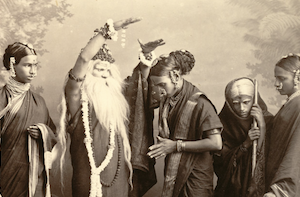
|
1200-2020 |
| Policing Untouchables and Producing Tamasha in Maharashtra | |
| 1530-1858 | |

|
1530-1858 |
| Rajputs, Mughals and the Handguns of Hindustan | |
| 1575 | |
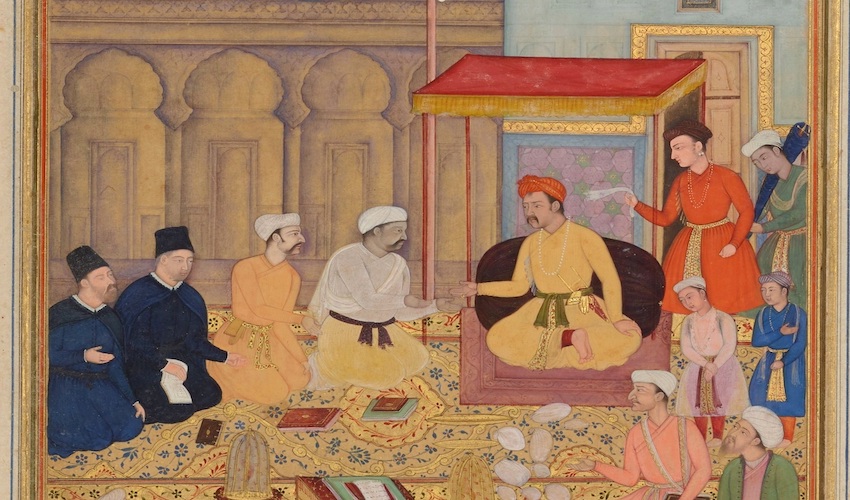
|
1575 |
| Abdul Qadir Badauni & Abul Fazl: Two Mughal Intellectuals in King Akbar‘s Court | |
| 1579 | |
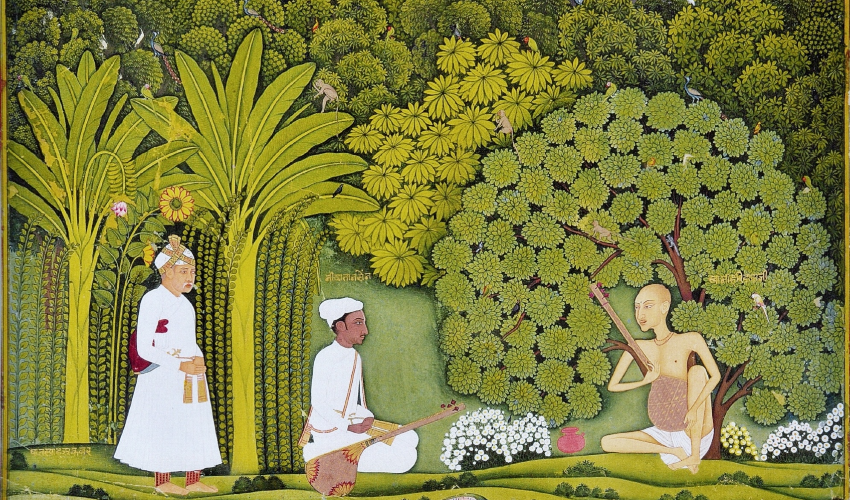
|
1579 |
| Padshah-i Islam | |
| 1550-1800 | |
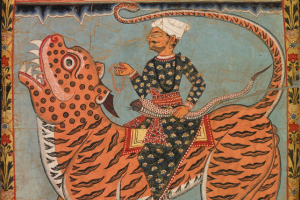
|
1550-1800 |
| Who are the Bengal Muslims? : Conversion and Islamisation in Bengal | |
| c. 1600 CE-1900 CE | |

|
c. 1600 CE-1900 CE |
| The Birth of a Community: UP’s Ghazi Miyan and Narratives of ‘Conquest’ | |
| 1553 - 1900 | |
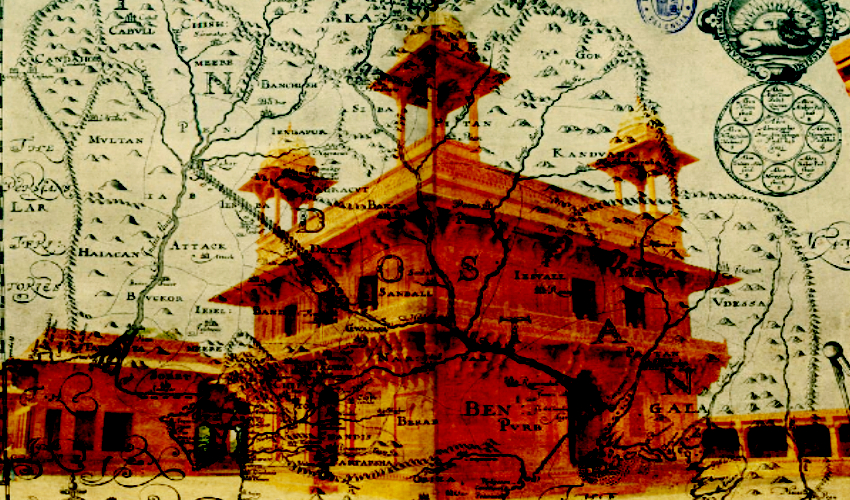
|
1553 - 1900 |
| What Happened to ‘Hindustan’? | |
| 1630-1680 | |
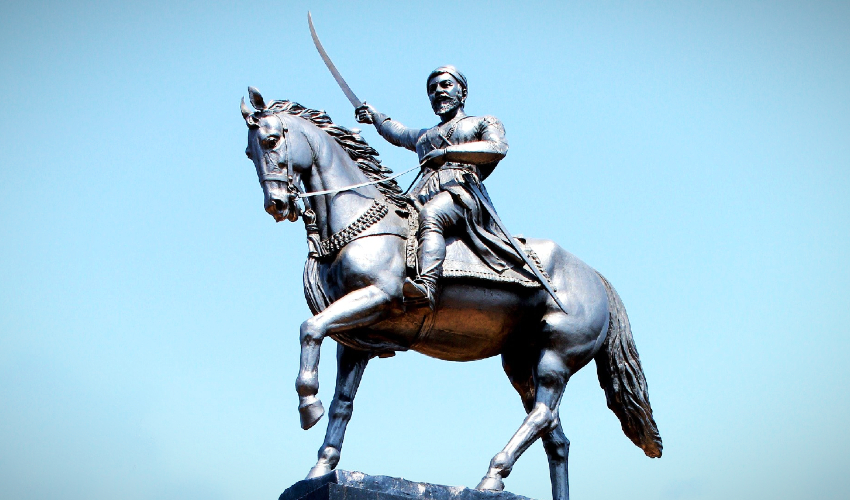
|
1630-1680 |
| Shivaji: Hindutva Icon or Secular Nationalist? | |
| 1630 -1680 | |
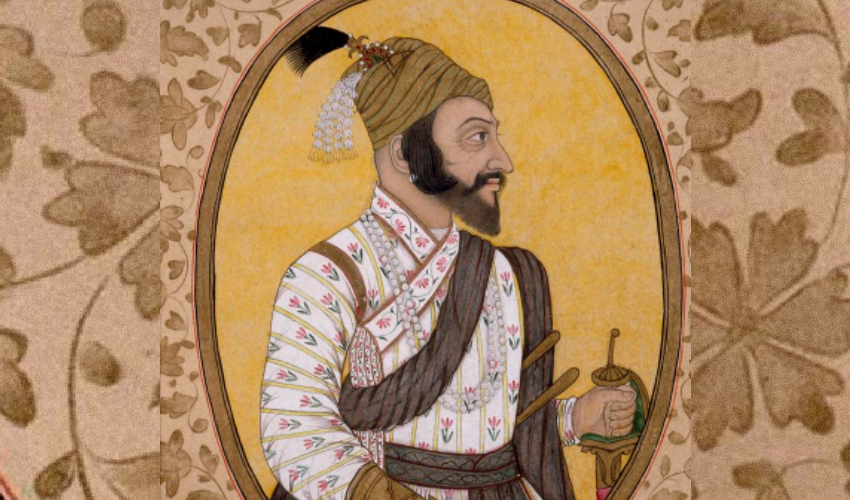
|
1630 -1680 |
| Shivaji: His Legacy & His Times | |
| c. 1724 – 1857 A.D. | |

|
c. 1724 – 1857 A.D. |
| Bahu Begum and the Gendered Struggle for Power | |
| 1818 - Present | |
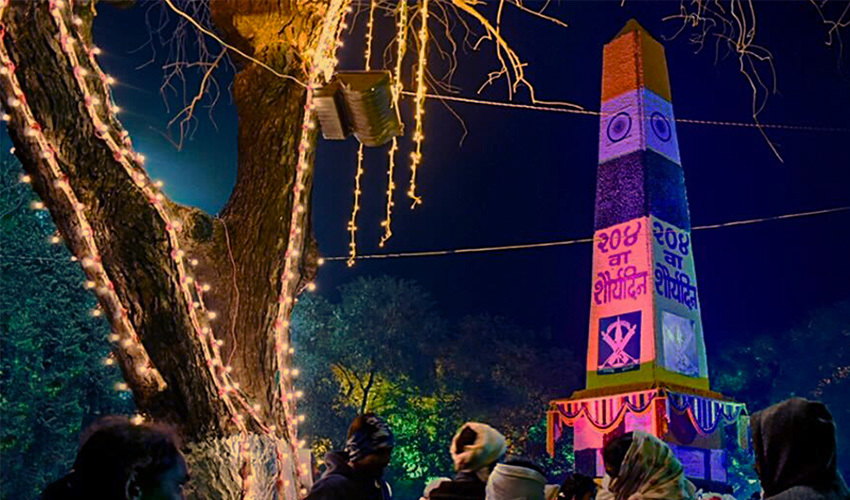
|
1818 - Present |
| The Contesting Memories of Bhima-Koregaon | |
| 1831 | |
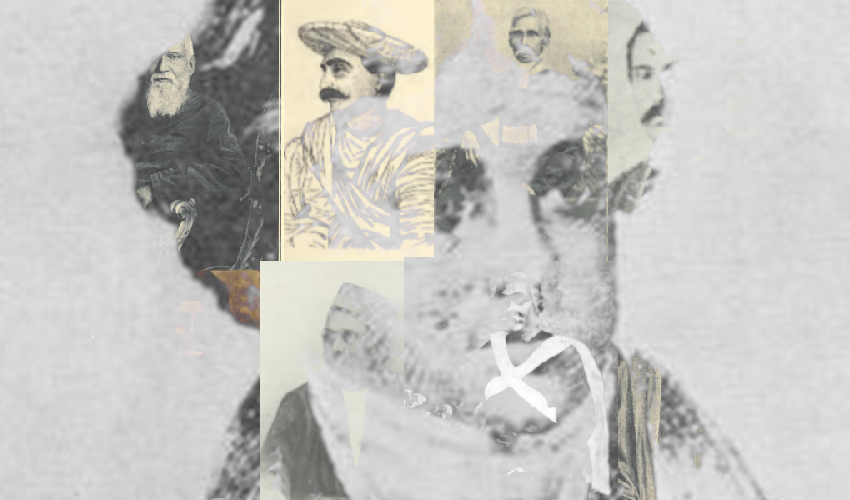
|
1831 |
| The Derozians’ India | |
| 1855 | |
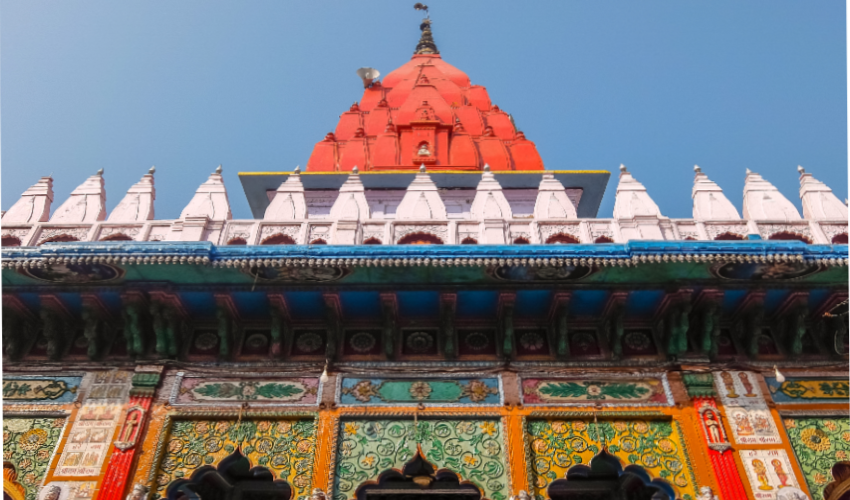
|
1855 |
| Ayodhya 1855 | |
| 1856 | |
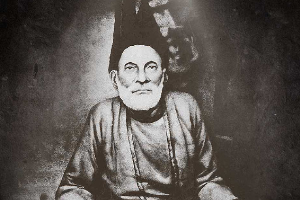
|
1856 |
| “Worshipping the dead is not an auspicious thing” — Ghalib | |
| 1857 | |
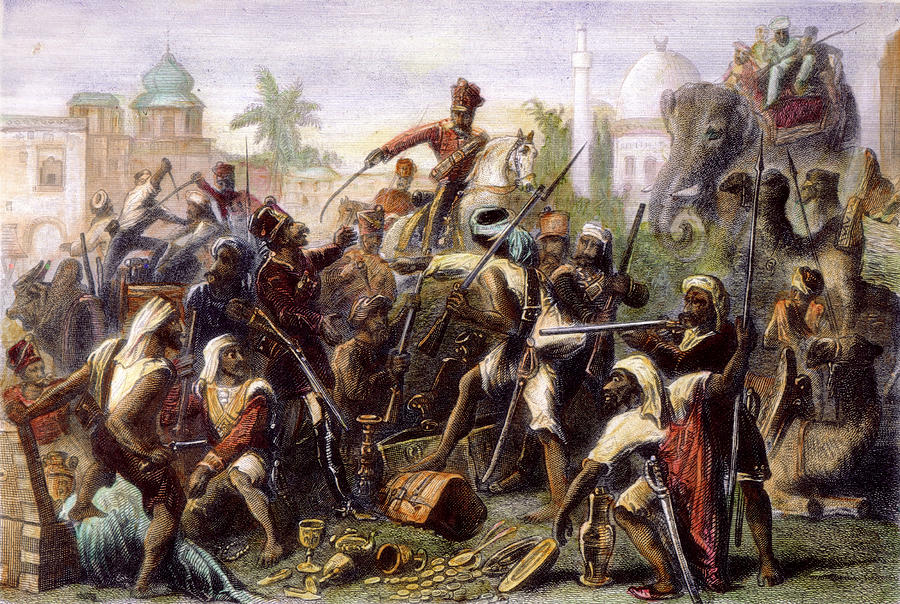
|
1857 |
| A Subaltern speaks: Dalit women’s counter-history of 1857 | |
| 1858 - 1976 | |
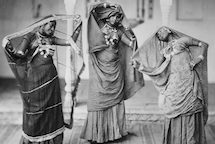
|
1858 - 1976 |
| Lifestyle as Resistance: The Curious Case of the Courtesans of Lucknow | |
| 1883 - 1894 | |
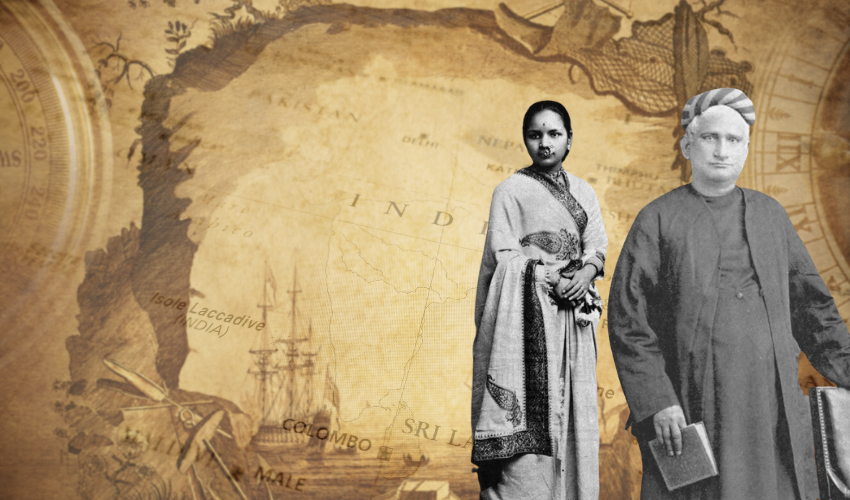
|
1883 - 1894 |
| The Sea Voyage Question: A Nineteenth century Debate | |
| 1887 | |
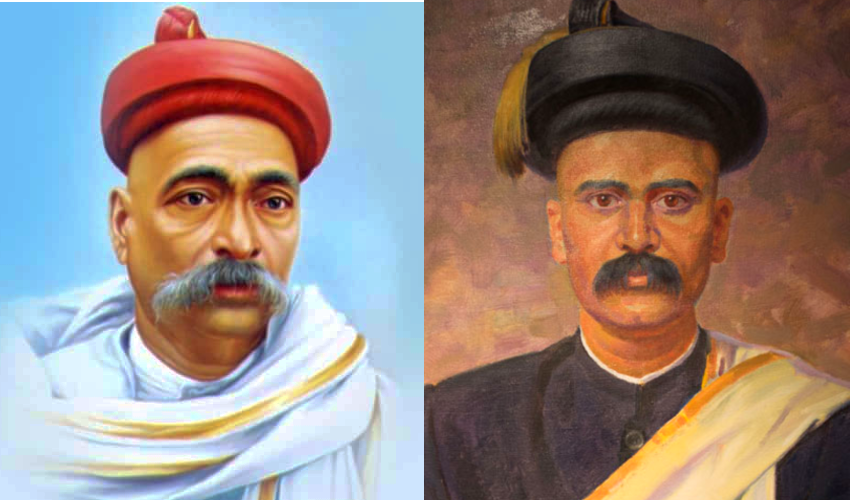
|
1887 |
| The Great Debaters: Tilak Vs. Agarkar | |
| 1893-1946 | |
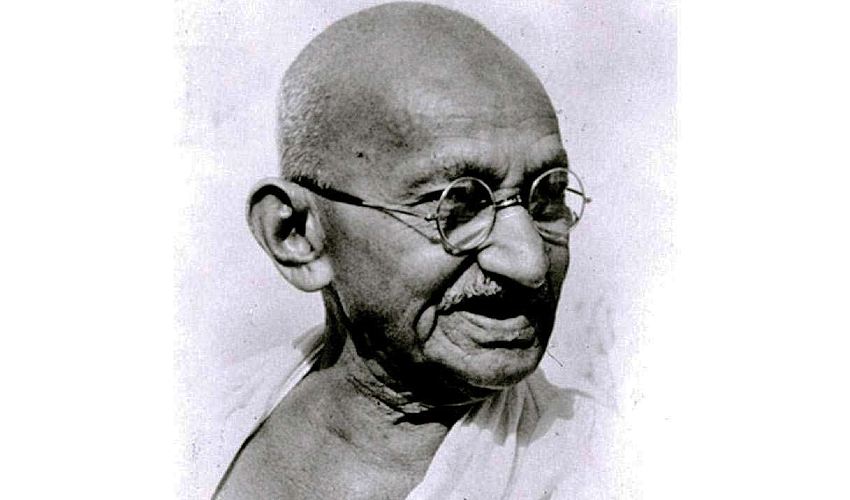
|
1893-1946 |
| A Historian Recommends: Gandhi Vs. Caste | |
| 1897 | |
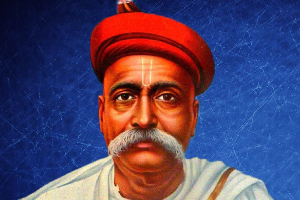
|
1897 |
| Queen Empress vs. Bal Gangadhar Tilak: An Autopsy | |
| 1913 - 1916 Modern Review | |
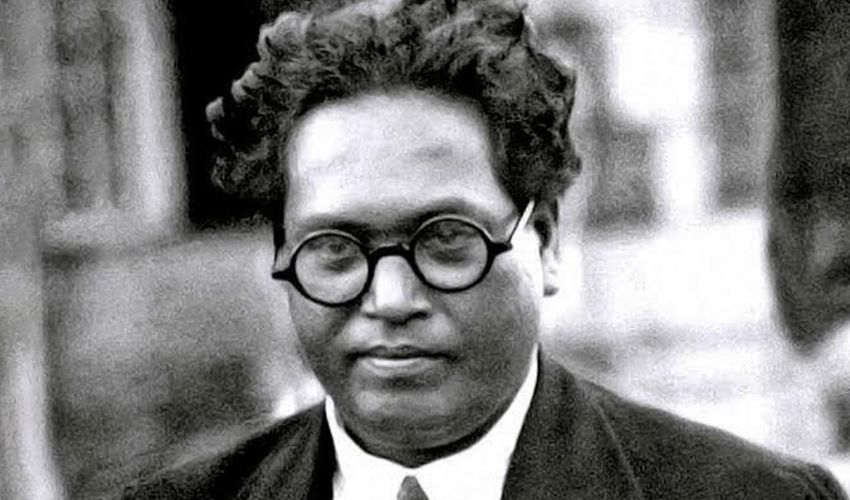
|
1913 - 1916 |
| A Young Ambedkar in New York | |
| 1916 | |
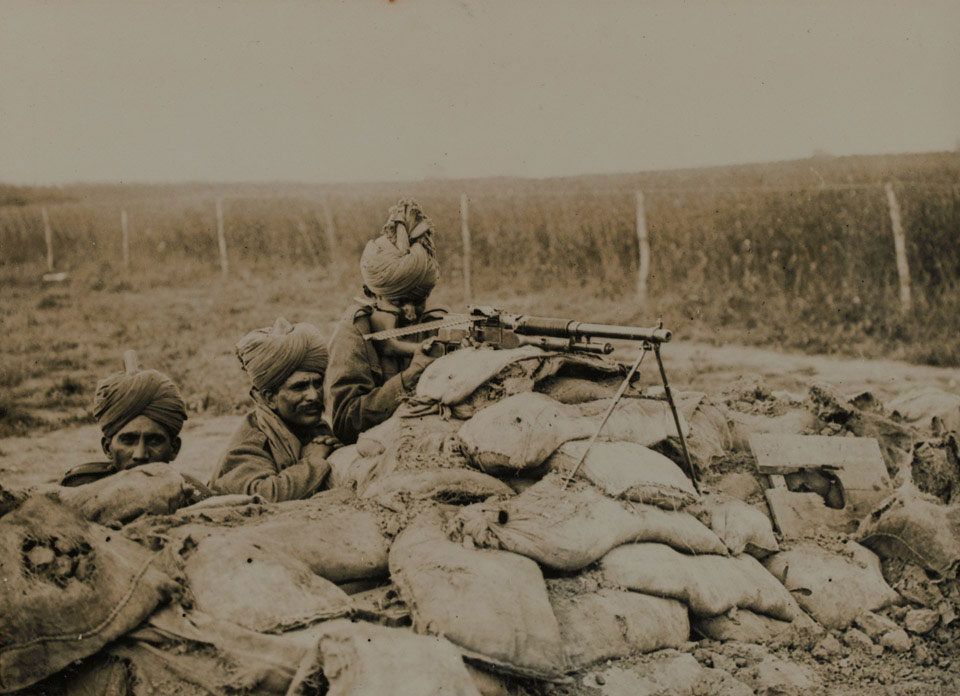
|
1916 |
| A Rare Account of World War I by an Indian Soldier | |
| 1917 | |
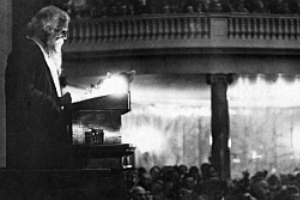
|
1917 |
| On Nationalism, by Tagore | |
| 1918 - 1919 | |

|
1918 - 1919 |
| What Happened to the Virus That Caused the World’s Deadliest Pandemic? | |
| 1920 - 1947 | |

|
1920 - 1947 |
| How One Should Celebrate Diwali, According to Gandhi | |
| 1921 | |
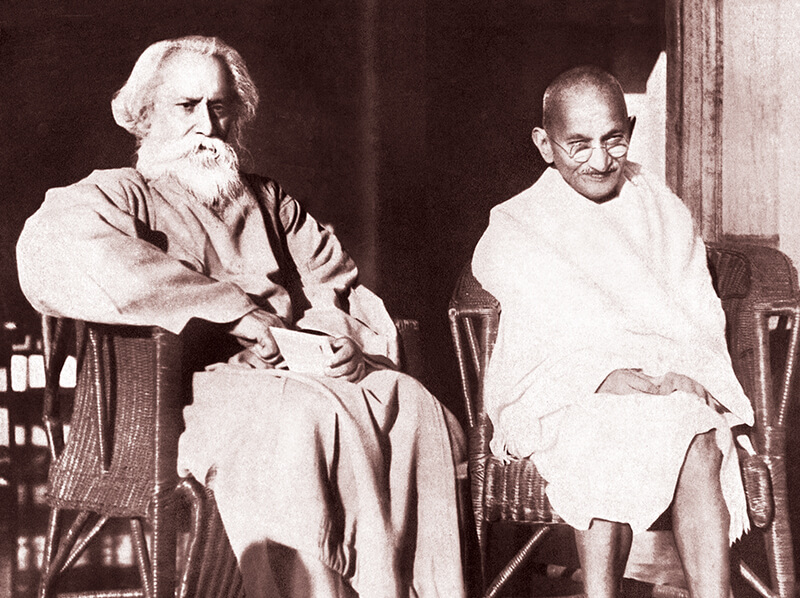
|
1921 |
| Great Debates: Tagore Vs. Gandhi (1921) | |
| 1921 - 2015 | |
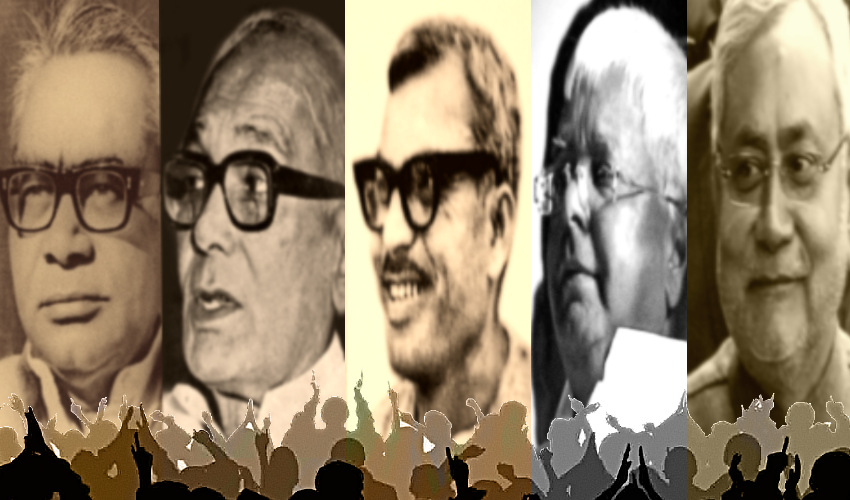
|
1921 - 2015 |
| A History of Caste Politics and Elections in Bihar | |
| 1915-1921 | |
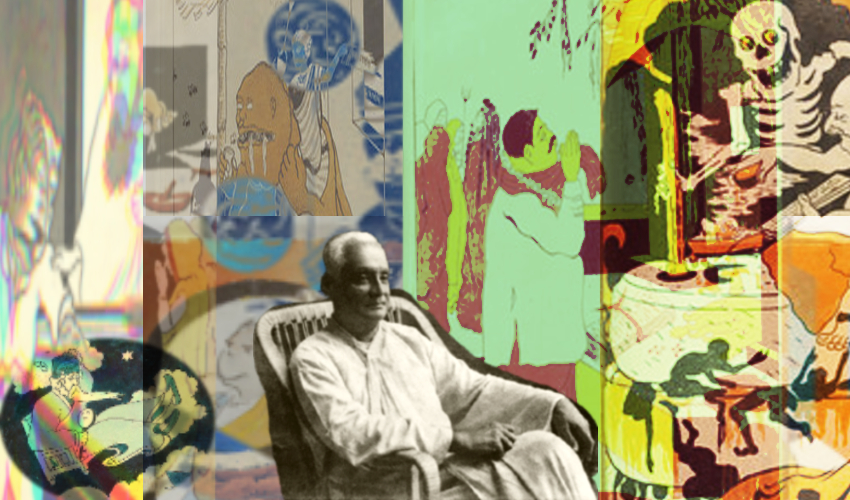
|
1915-1921 |
| The Satirical Genius of Gaganendranath Tagore | |
| 1924-1937 | |

|
1924-1937 |
| What were Gandhi’s Views on Religious Conversion? | |
| 1900-1950 | |
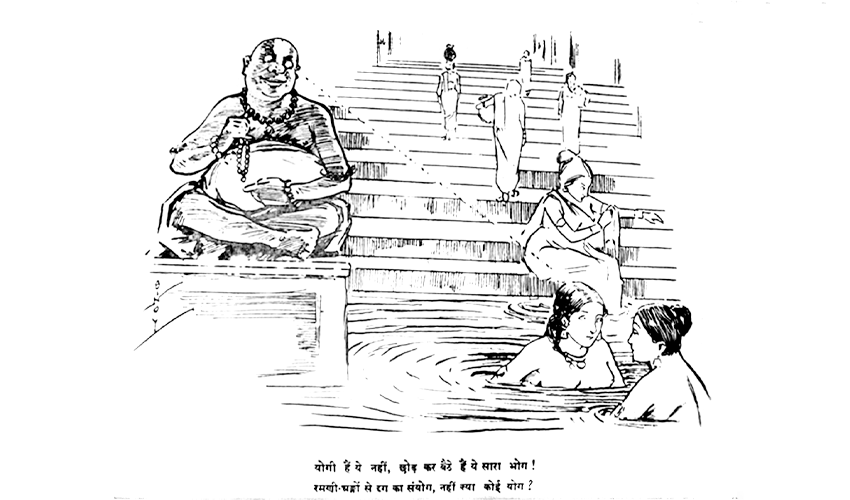
|
1900-1950 |
| Gazing at the Woman’s Body: Historicising Lust and Lechery in a Patriarchal Society | |
| 1925, 1926 | |
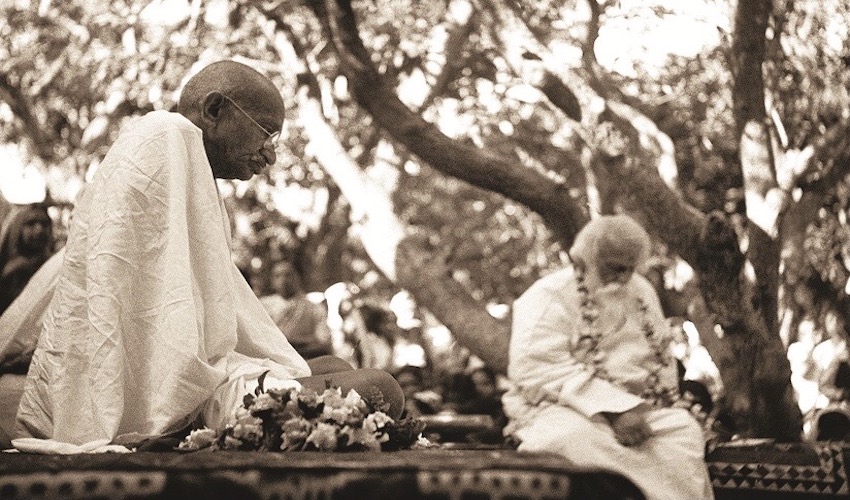
|
1925, 1926 |
| Great Debates: Tagore vs Gandhi (1925-1926) | |
| 1928 | |
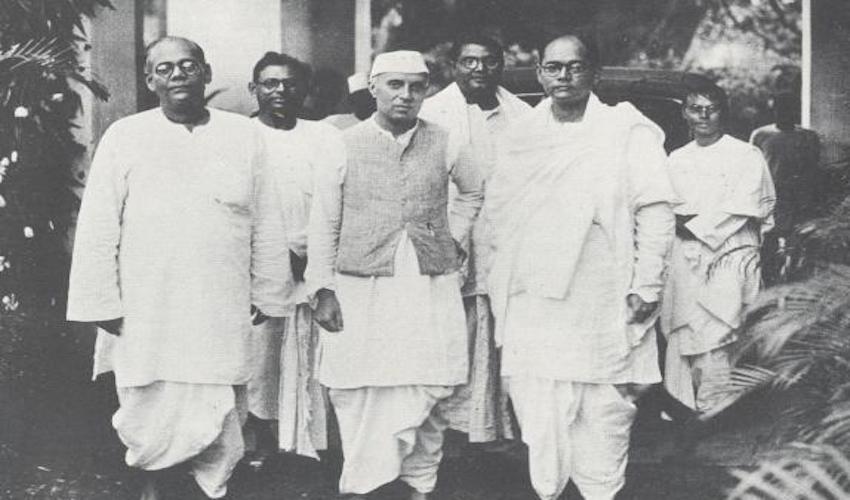
|
1928 |
| Bhagat Singh’s dilemma: Nehru or Bose? | |
| 1930 Modern Review | |
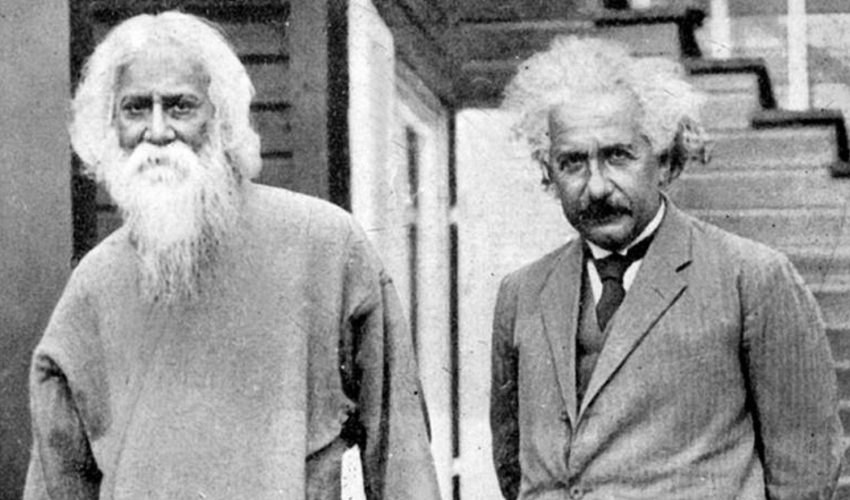
|
1930 |
| The Modern Review Special: On the Nature of Reality | |
| 1932 | |
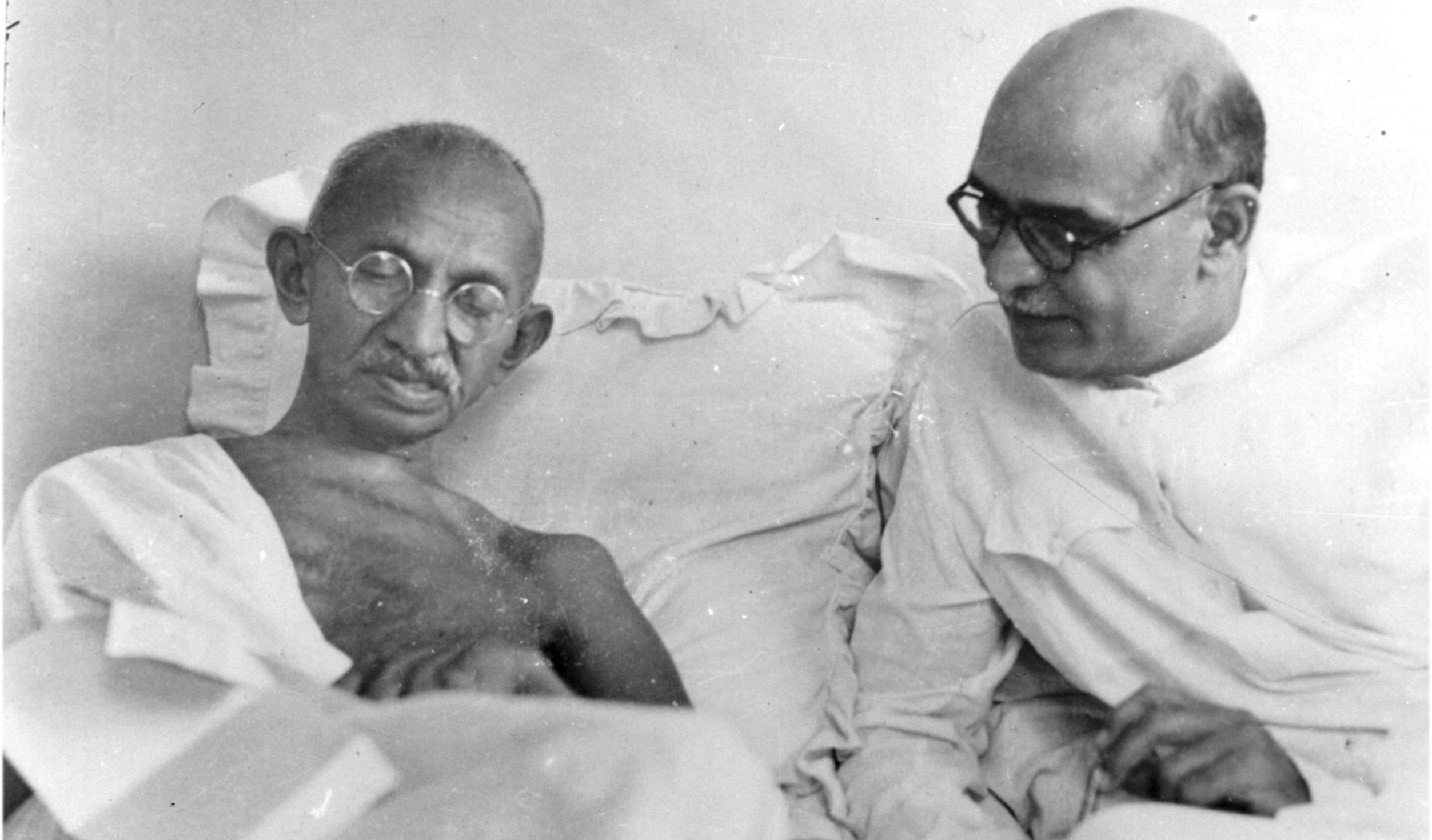
|
1932 |
| Caste, Gandhi and the Man Beside Gandhi | |
| 1933 - 1991 | |

|
1933 - 1991 |
| Raghubir Sinh: The Prince Who Would Be Historian | |
| 1935 | |
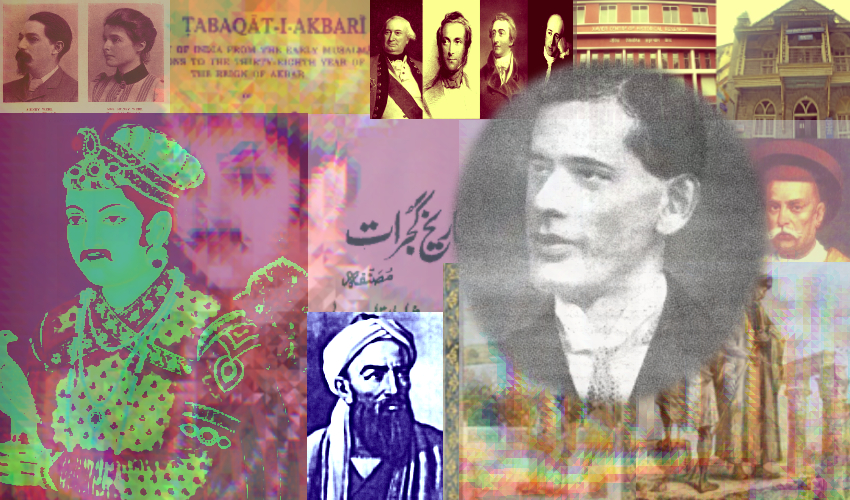
|
1935 |
| A Historian Recommends: SA Khan’s Timeless Presidential Address | |
| 1865-1928 | |

|
1865-1928 |
| Understanding Lajpat Rai’s Hindu Politics and Secularism | |
| 1935 Modern Review | |
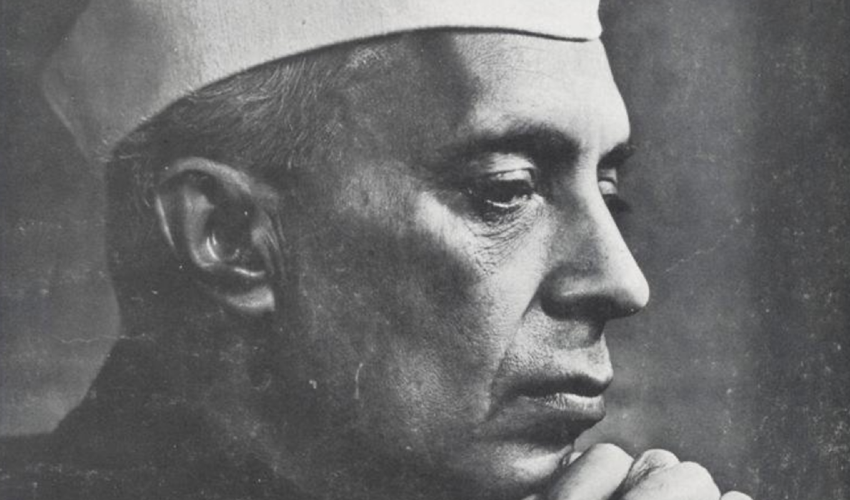
|
1935 |
| The Modern Review Special: The Mind of a Judge | |
| 1936 Modern Review | |
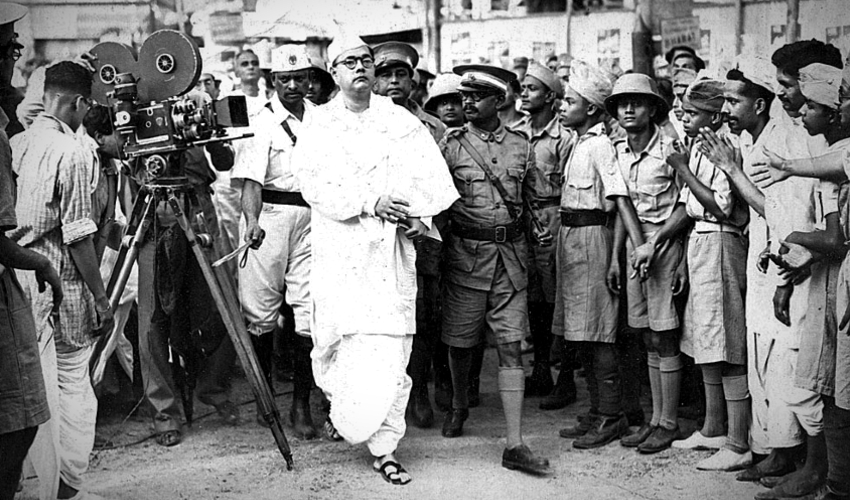
|
1936 |
| The Modern Review Special: When Netaji Subhas Bose Was Wrongfully Detained for ‘Terrorism’ | |
| 1936 | |

|
1936 |
| Annihilation of Caste: Part 1 | |
| 1936 Modern Review | |

|
1936 |
| The Modern Review Special: An Indian MP in the British Parliament | |
| 1936 | |

|
1936 |
| Annihilation of Caste: Part 2 | |
| 1936 | |

|
1936 |
| A Reflection of His Age: Munshi Premchand on the True Purpose of Literature | |
| 1936 Modern Review | |
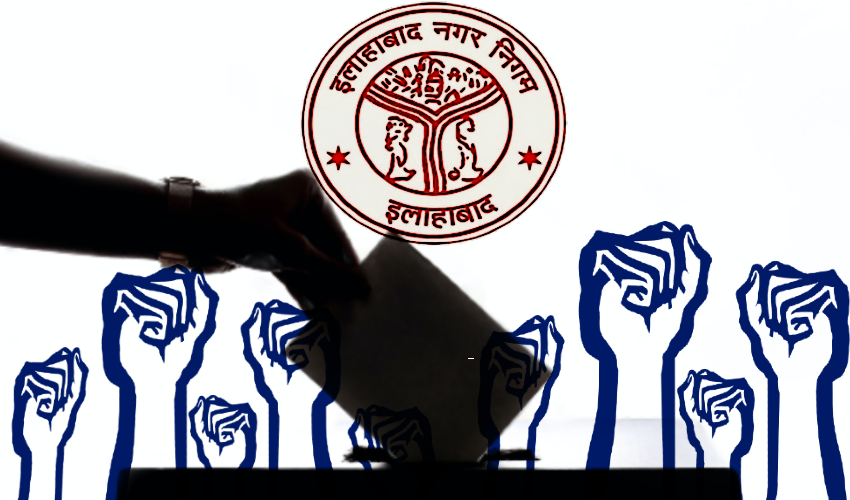
|
1936 |
| The Modern Review Special: The Defeat of a Dalit Candidate in a 1936 Municipal Election | |
| 1937 Modern Review | |
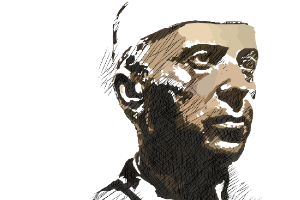
|
1937 |
| The Modern Review Special: Rashtrapati | |
| 1938 | |
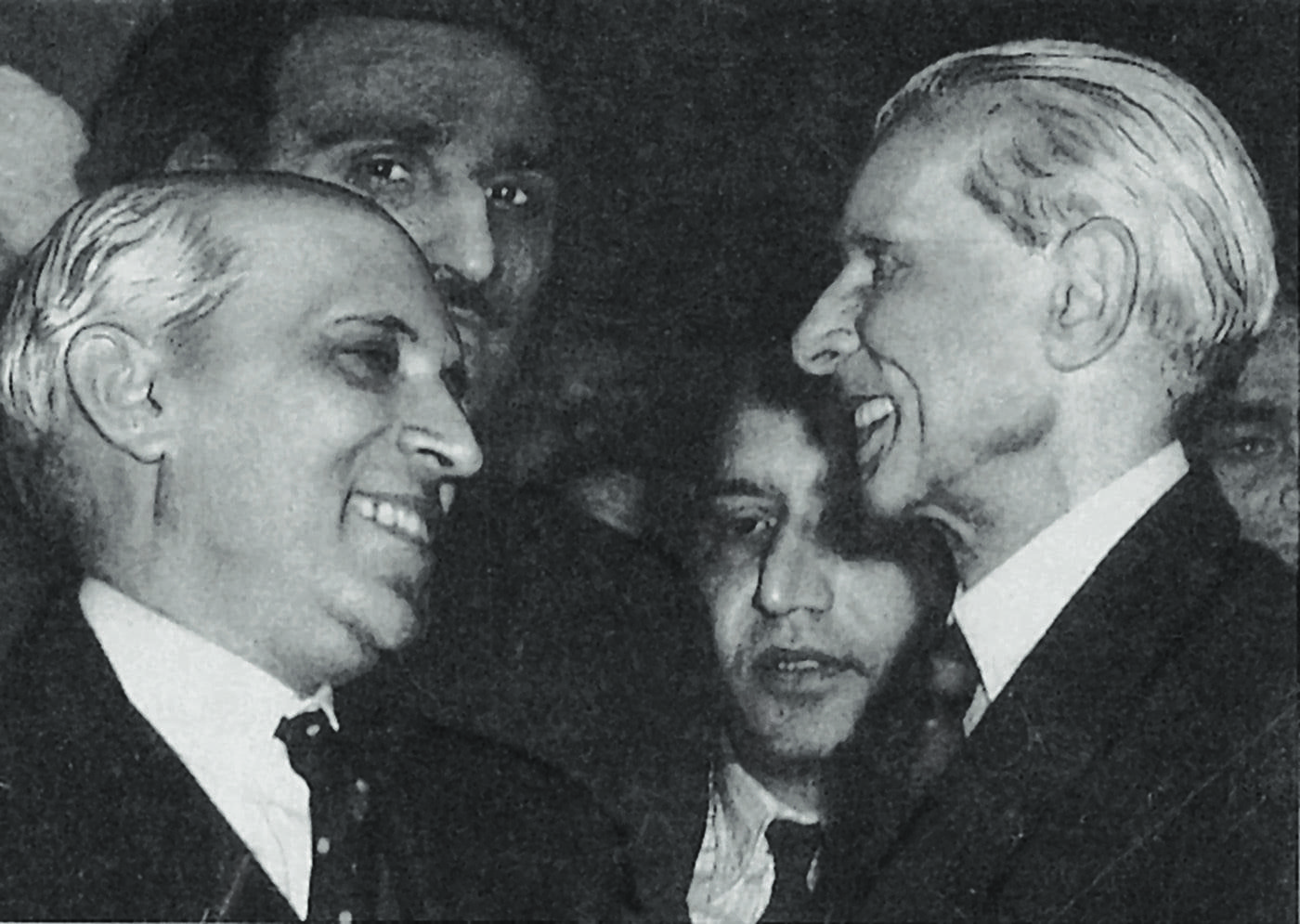
|
1938 |
| Great Debates: Nehru Vs. Jinnah (1938) | |
| 1942 Modern Review | |
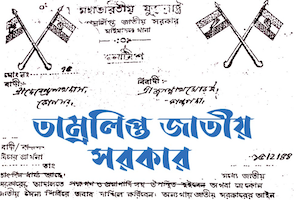
|
1942 |
| IHC Uncovers: A Parallel Government In British India (Part 1) | |
| 1943-1945 | |
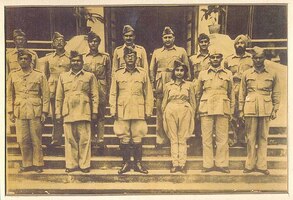
|
1943-1945 |
| Origin Of The Azad Hind Fauj | |
| 1942-1945 | |

|
1942-1945 |
| IHC Uncovers: A Parallel Government in British India (Part 2) | |
| 1946 | |
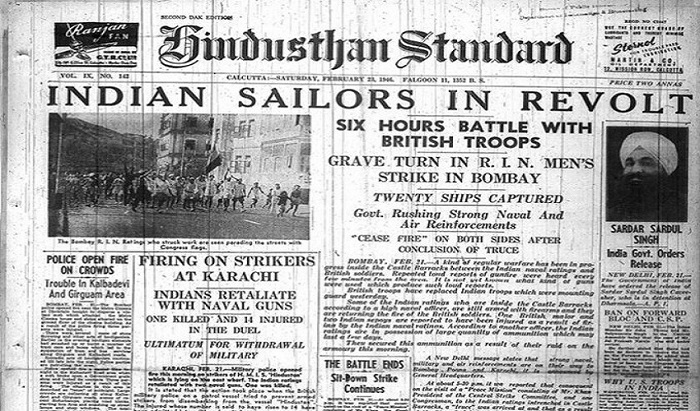
|
1946 |
| Our Last War of Independence: The Royal Indian Navy Mutiny of 1946 | |
| 1946 | |
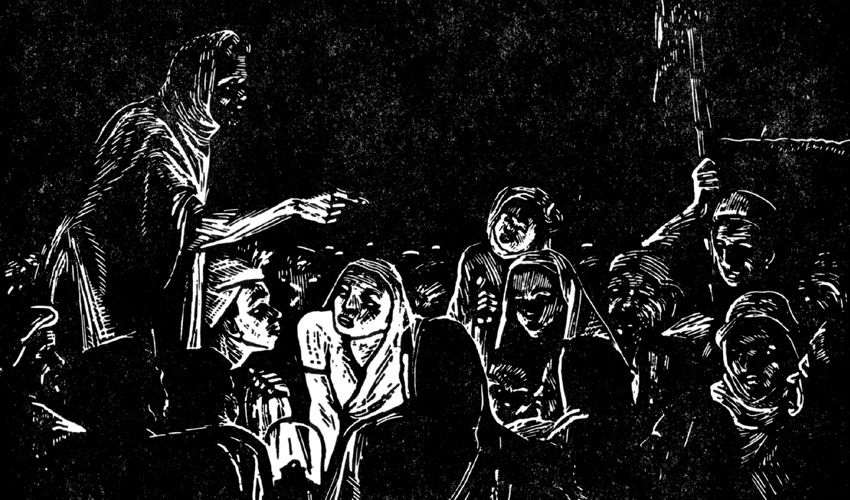
|
1946 |
| An Artist’s Account of the Tebhaga Movement in Pictures And Prose | |
| 1946 – 1947 | |
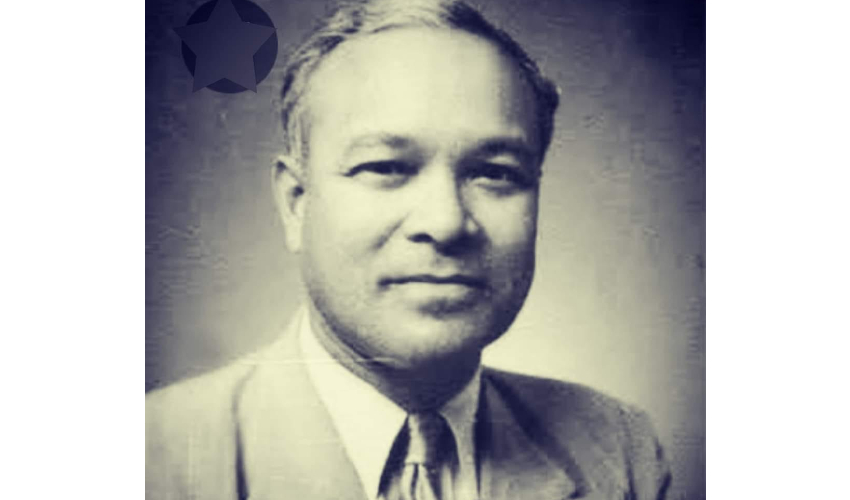
|
1946 – 1947 |
| “The Most Democratic People on Earth” : An Adivasi Voice in the Constituent Assembly | |
| 1946-1947 | |
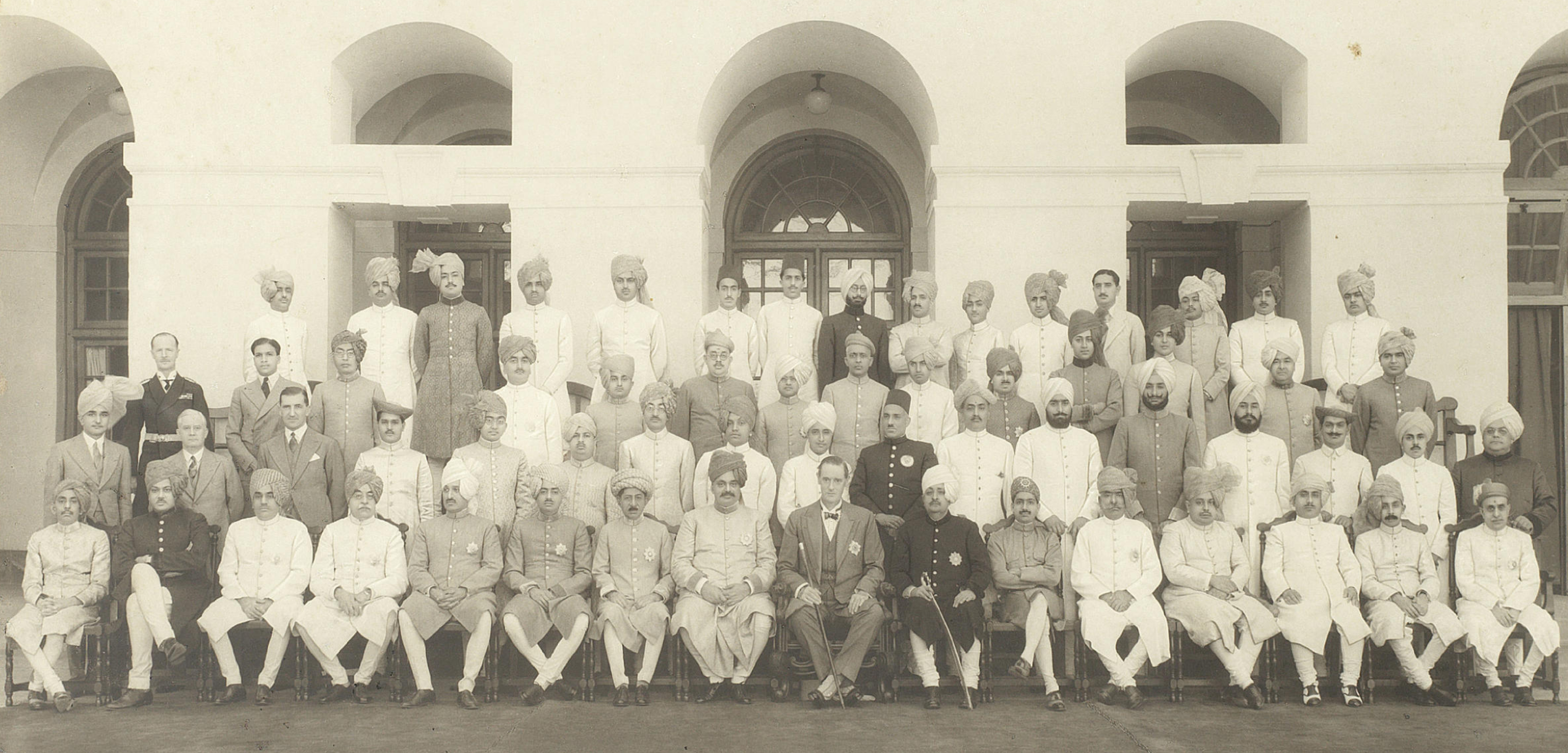
|
1946-1947 |
| VP Menon and the Birth of Independent India | |
| 1916 - 1947 | |
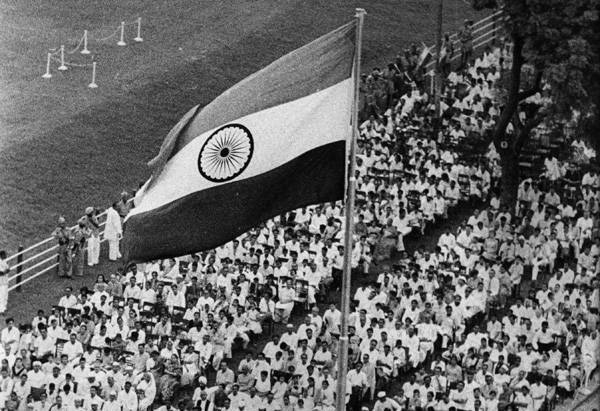
|
1916 - 1947 |
| 8 @ 75: 8 Speeches Independent Indians Must Read | |
| 1947-1951 | |
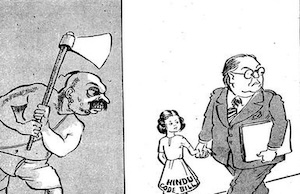
|
1947-1951 |
| Ambedkar Cartoons: The Joke’s On Us | |
| 1948 | |

|
1948 |
| “My Father, Do Not Rest” | |
| 1940-1960 | |

|
1940-1960 |
| Integration Myth: A Silenced History of Hyderabad | |
| 1948 | |
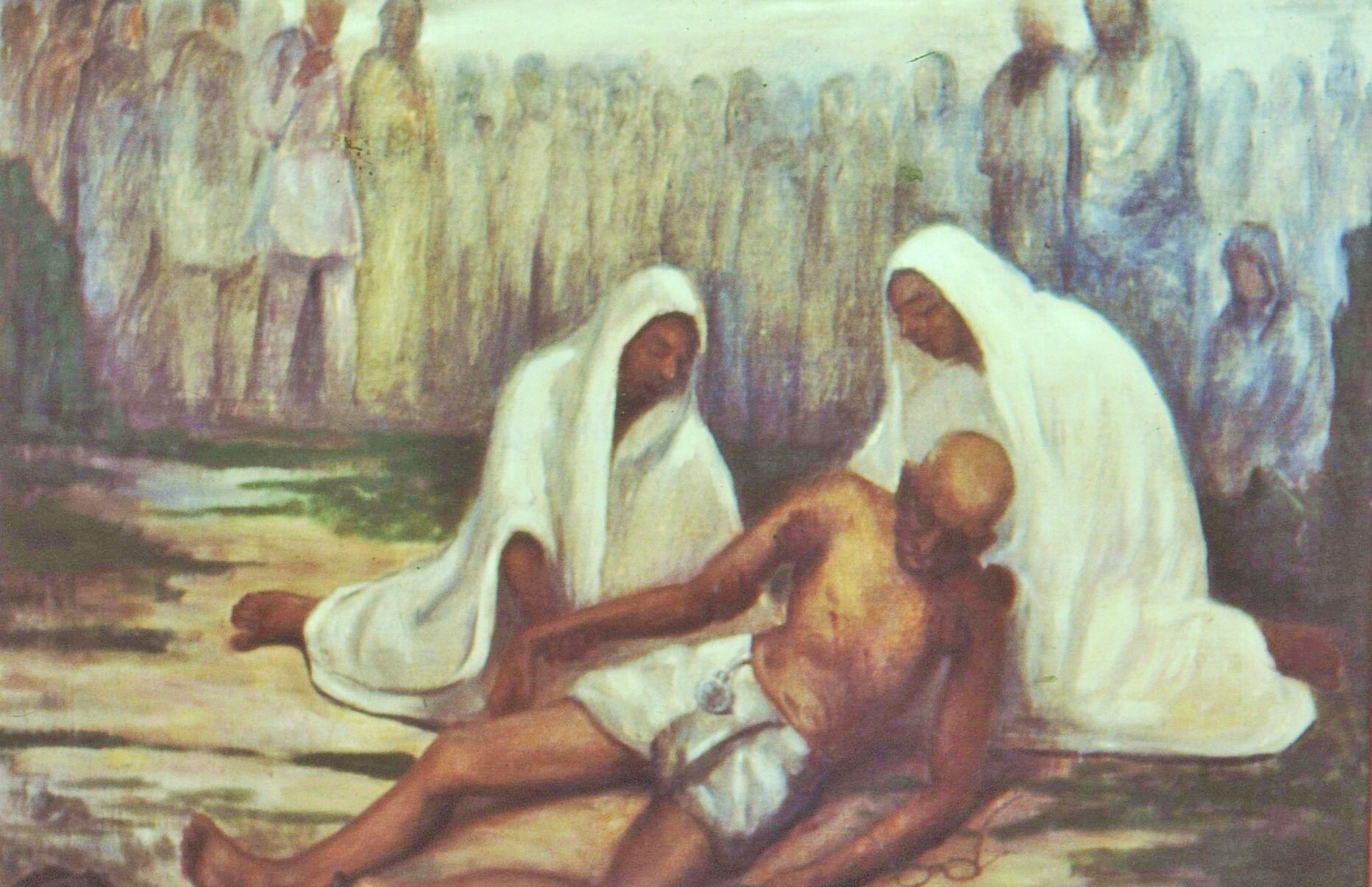
|
1948 |
| The Assassination of a Mahatma, the Princely States and the ‘Hindu’ Nation | |
| 1949 | |
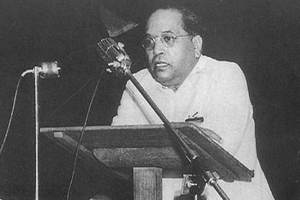
|
1949 |
| Ambedkar warns against India becoming a ‘Democracy in Form, Dictatorship in Fact’ | |
| 1950 | |
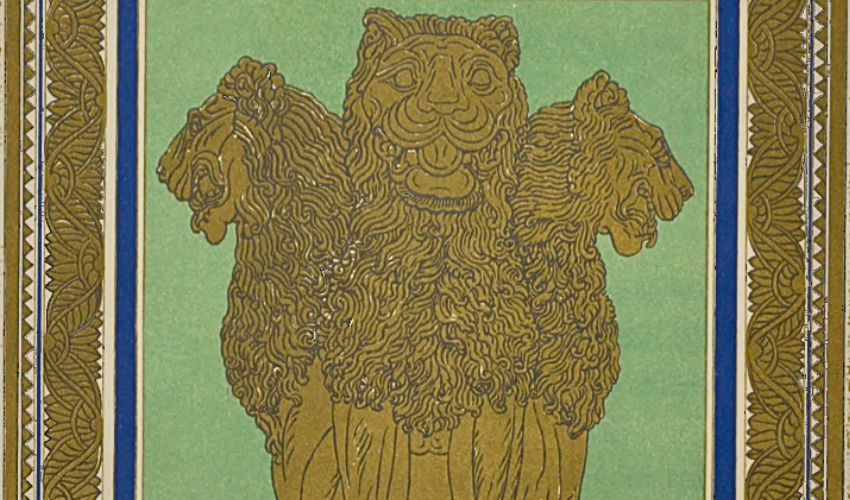
|
1950 |
| Illustrations from the constitution | |
| 1951 | |
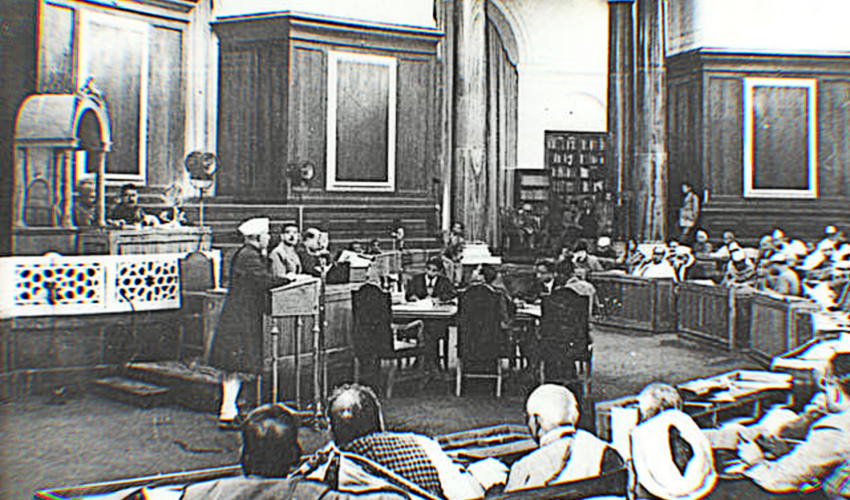
|
1951 |
| How the First Amendment to the Indian Constitution Circumscribed Our Freedoms & How it was Passed | |
| 1967 | |
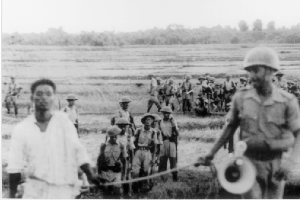
|
1967 |
| Once Upon A Time In Naxalbari | |
| 1970 | |
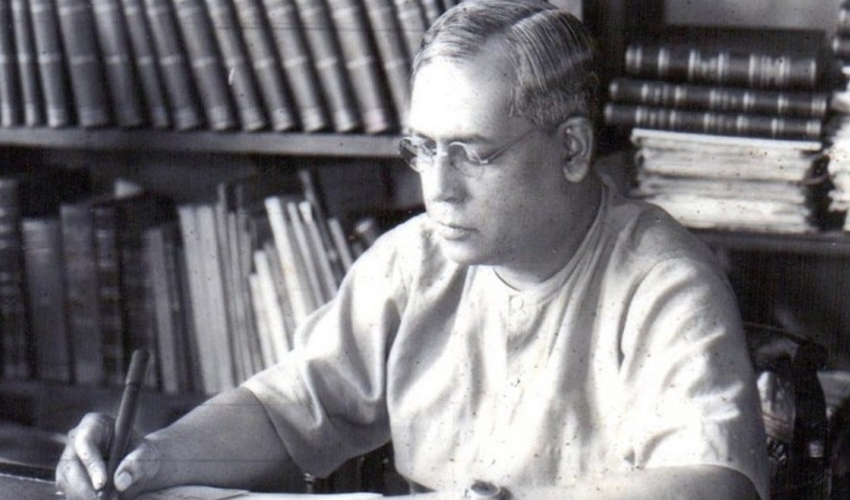
|
1970 |
| R.C. Majumdar on Shortcomings in Indian Historiography | |
| 1973 - 1993 | |
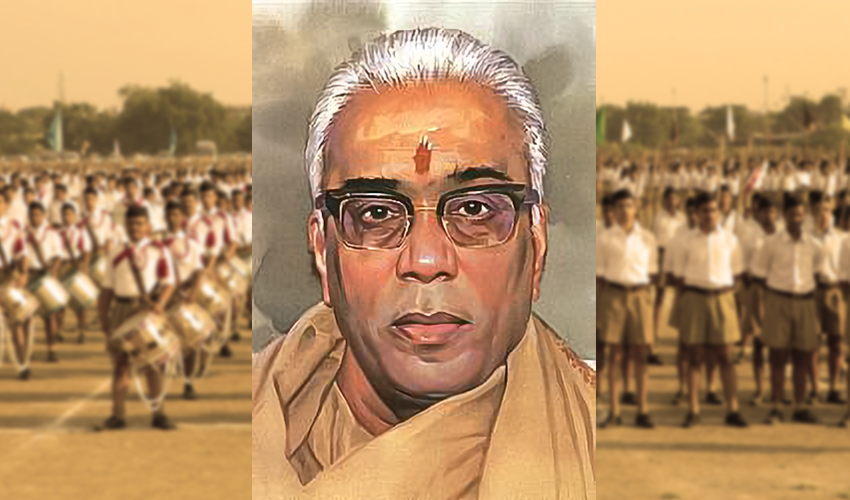
|
1973 - 1993 |
| Balasaheb Deoras: Kingmaker of the Sangh | |
| 1975 | |
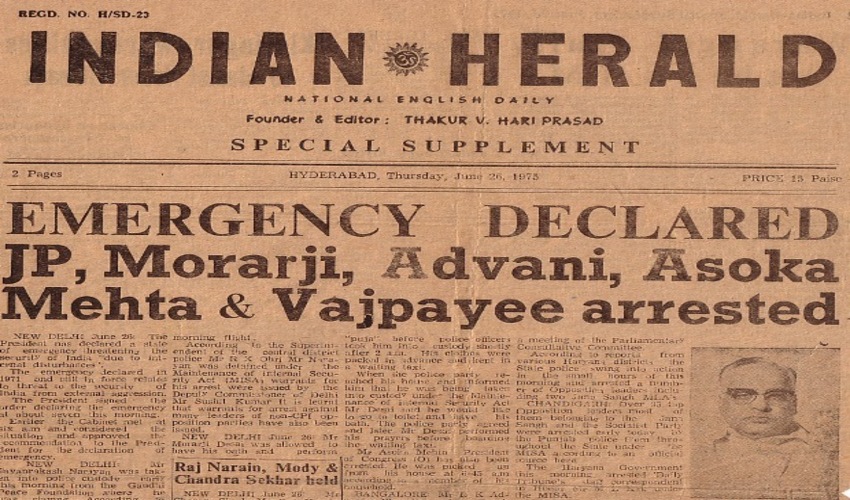
|
1975 |
| The Emergency Package: Shadow Power | |
| 1975 | |
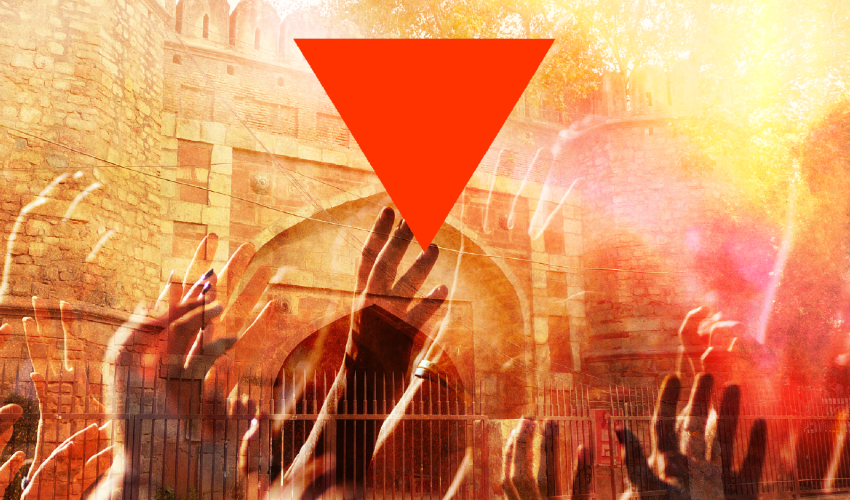
|
1975 |
| The Emergency Package: The Prehistory of Turkman Gate – Population Control | |
| 1977 – 2011 | |
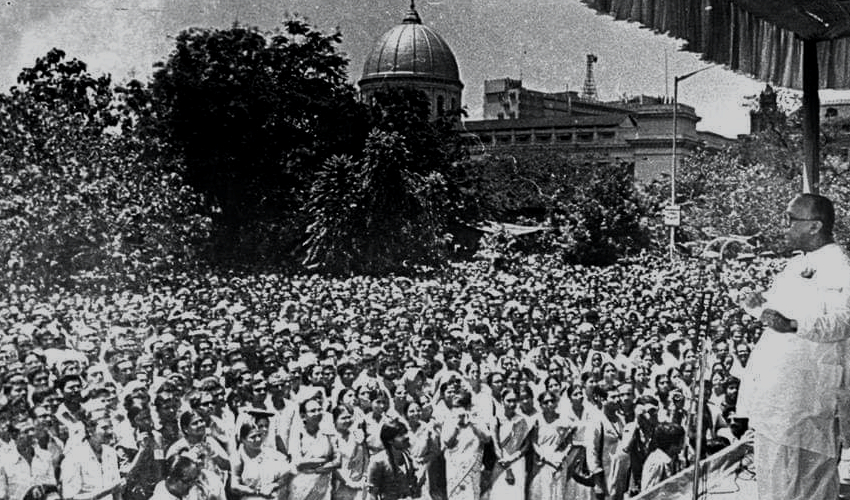
|
1977 – 2011 |
| Power is an Unforgiving Mistress: Lessons from the Decline of the Left in Bengal | |
| 1984 | |
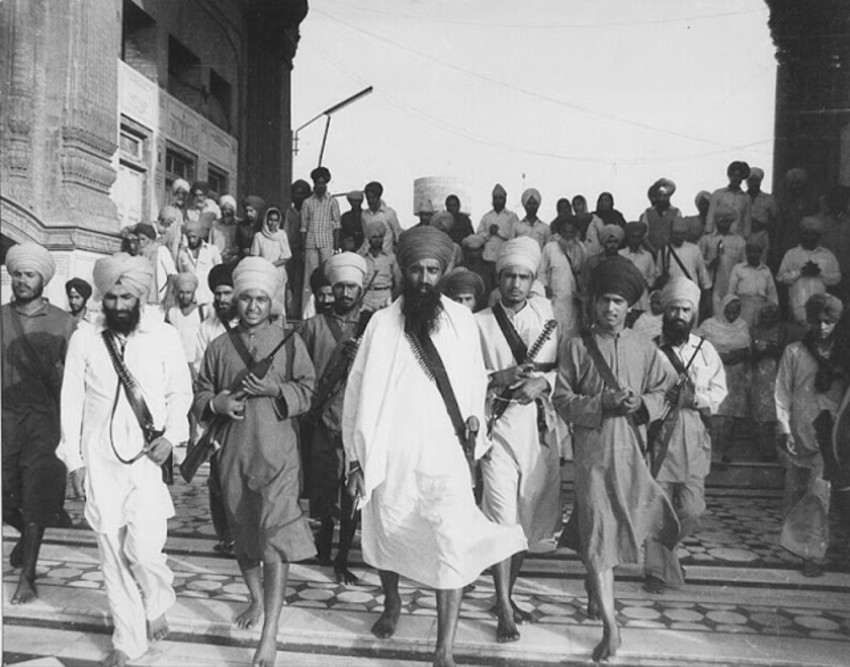
|
1984 |
| Mrs Gandhi’s Final Folly: Operation Blue Star | |
| 1916-2004 | |

|
1916-2004 |
| Amjad Ali Khan on M.S. Subbulakshmi: “A Glorious Chapter for Indian Classical Music” | |
| 2008 | |
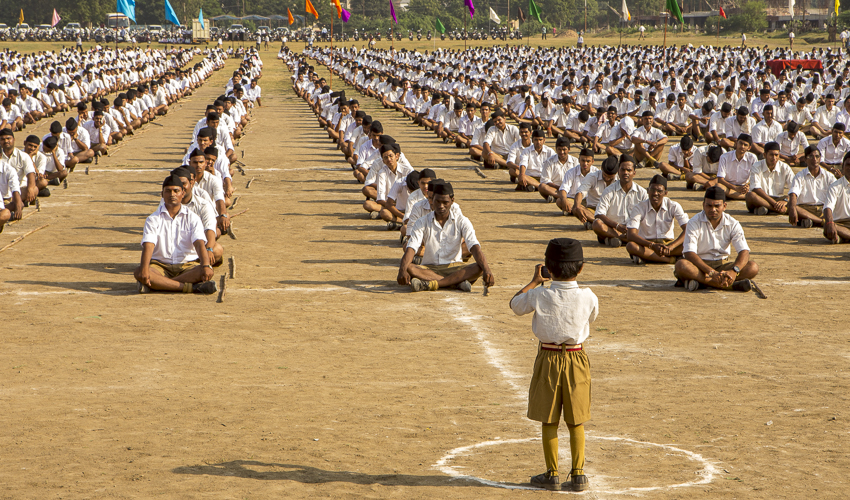
|
2008 |
| Whose History Textbook Is It Anyway? | |
| 2006 - 2009 | |

|
2006 - 2009 |
| Singur-Nandigram-Lalgarh: Movements that Remade Mamata Banerjee | |
| 2020 | |

|
2020 |
| The Indo-China Conflict: 10 Books We Need To Read | |
| 2021 | |
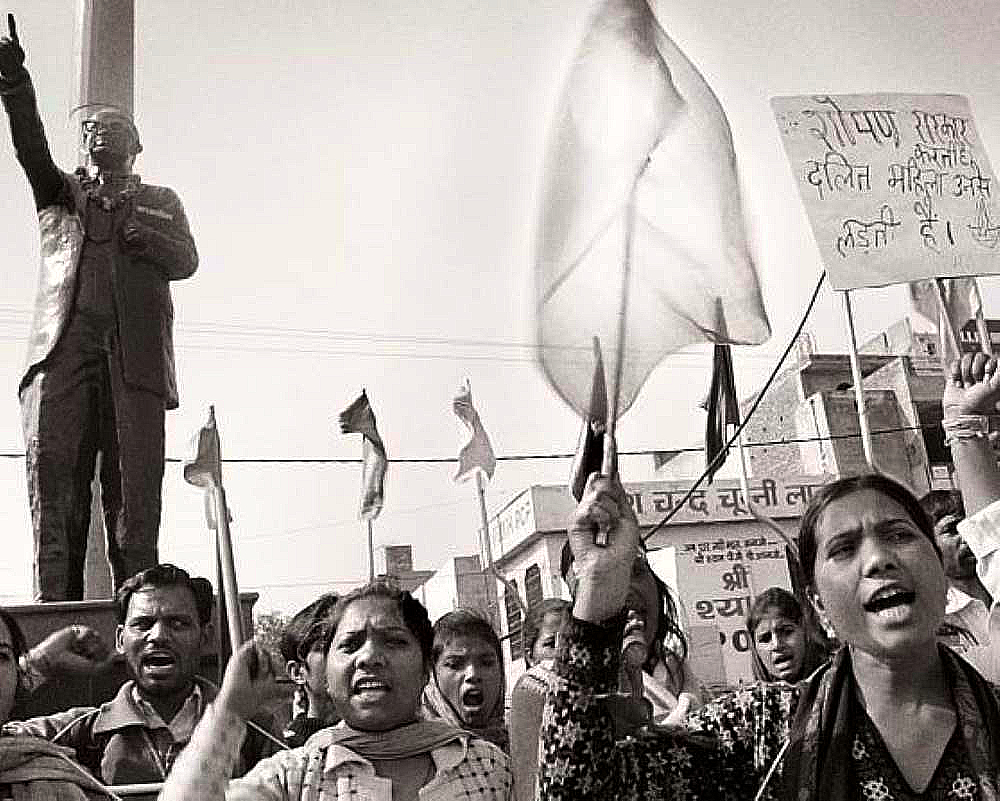
|
2021 |
| Singing/Writing Liberation: Dalit Women’s Narratives | |
Leave a Reply